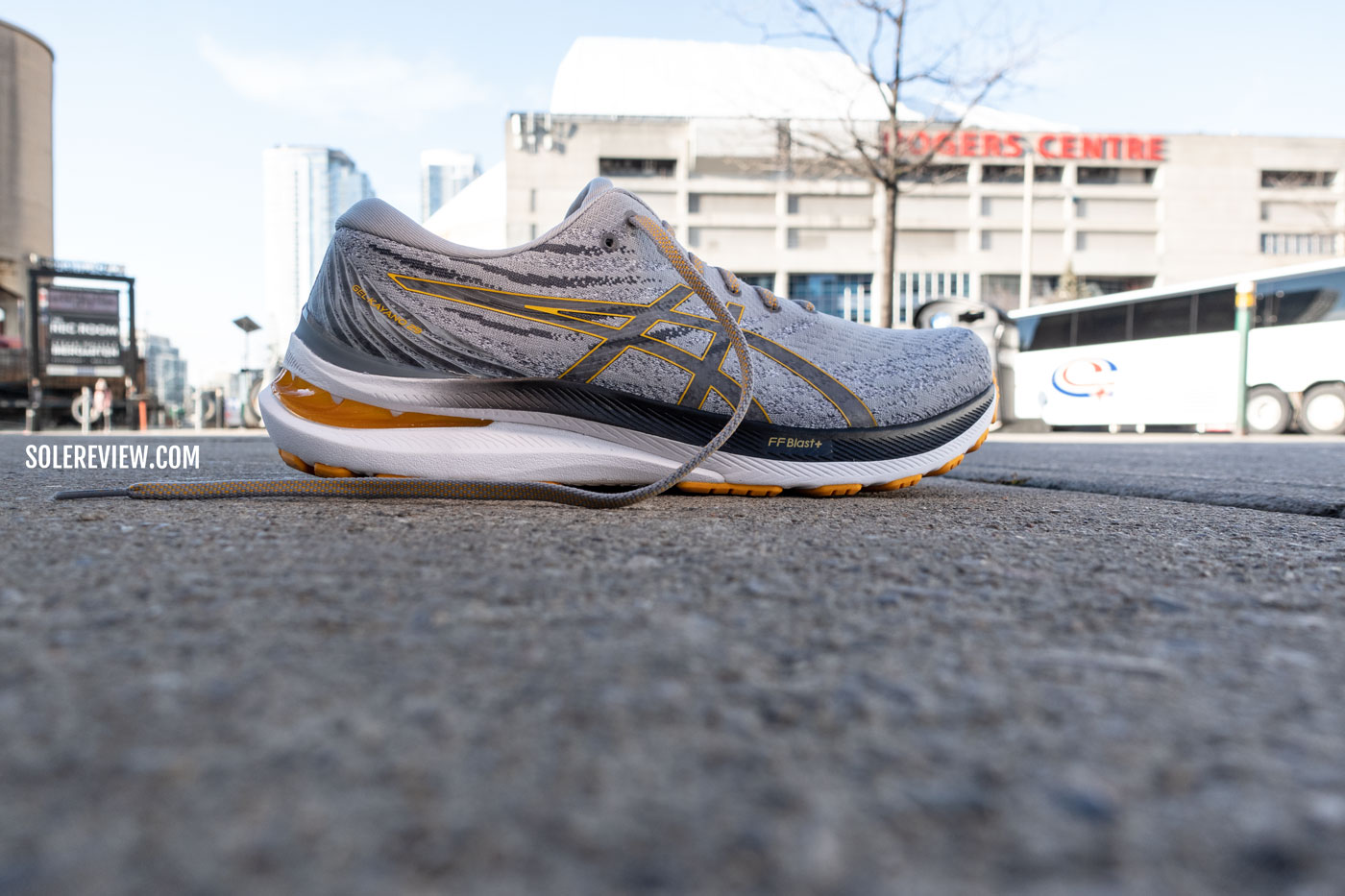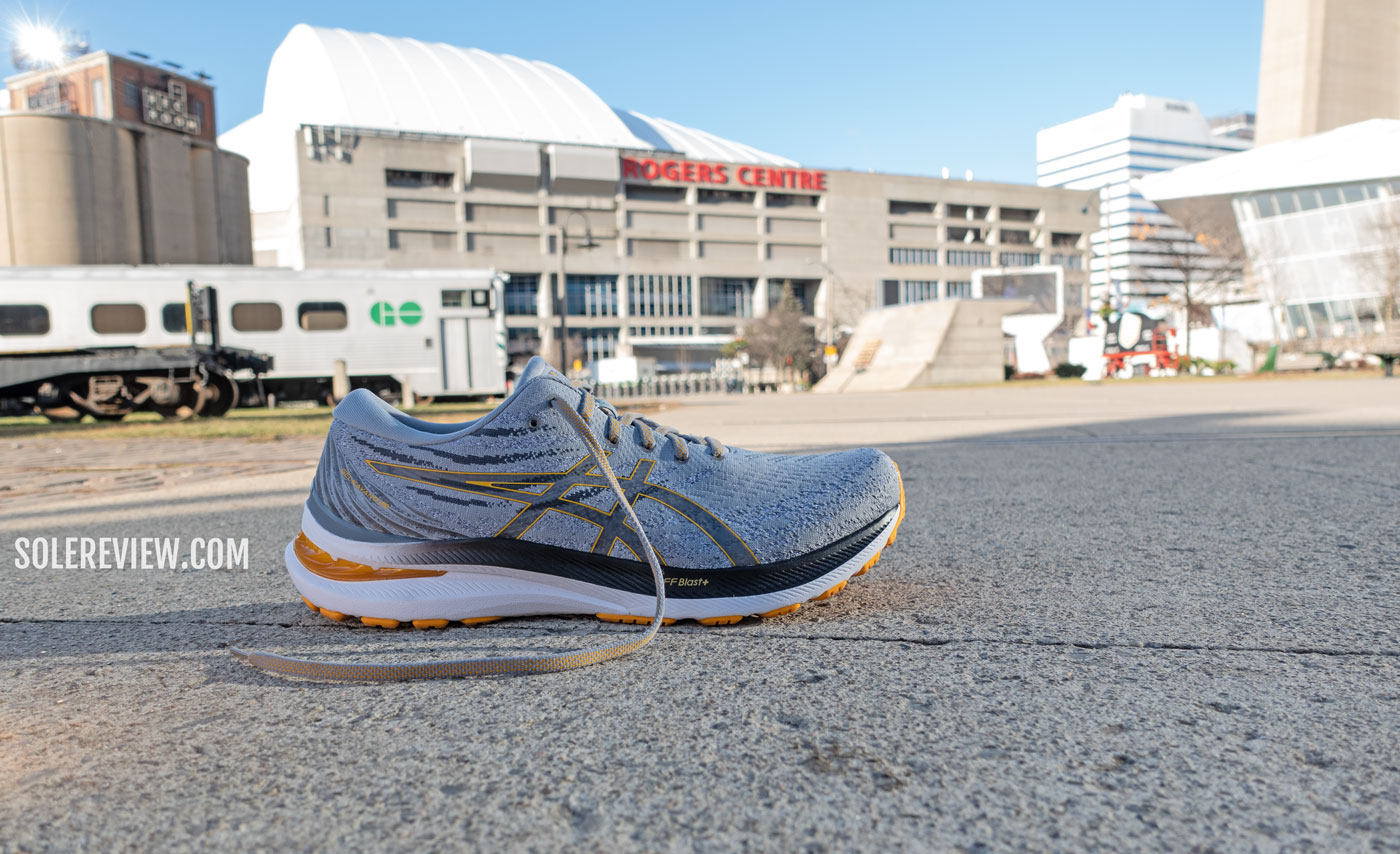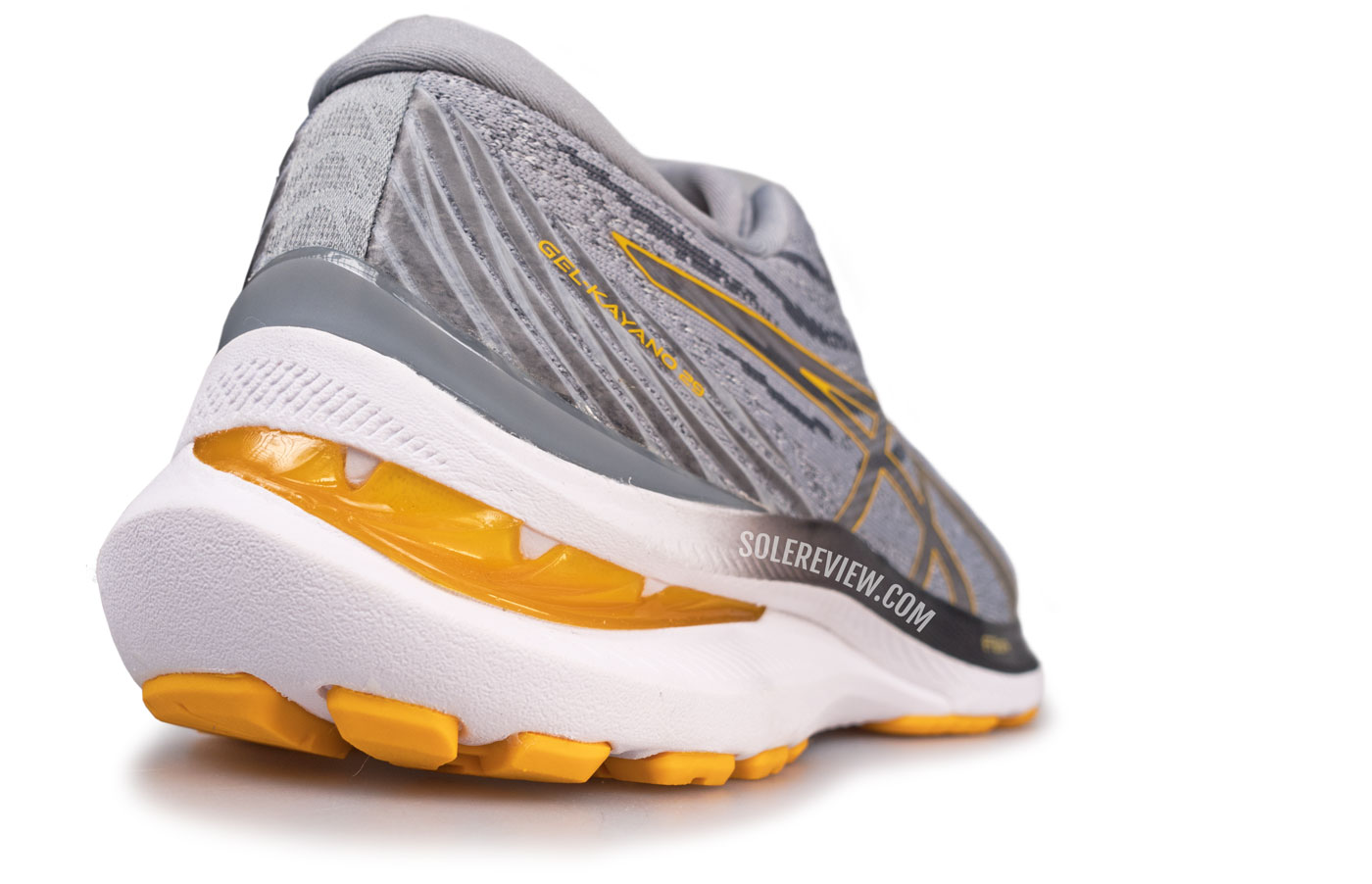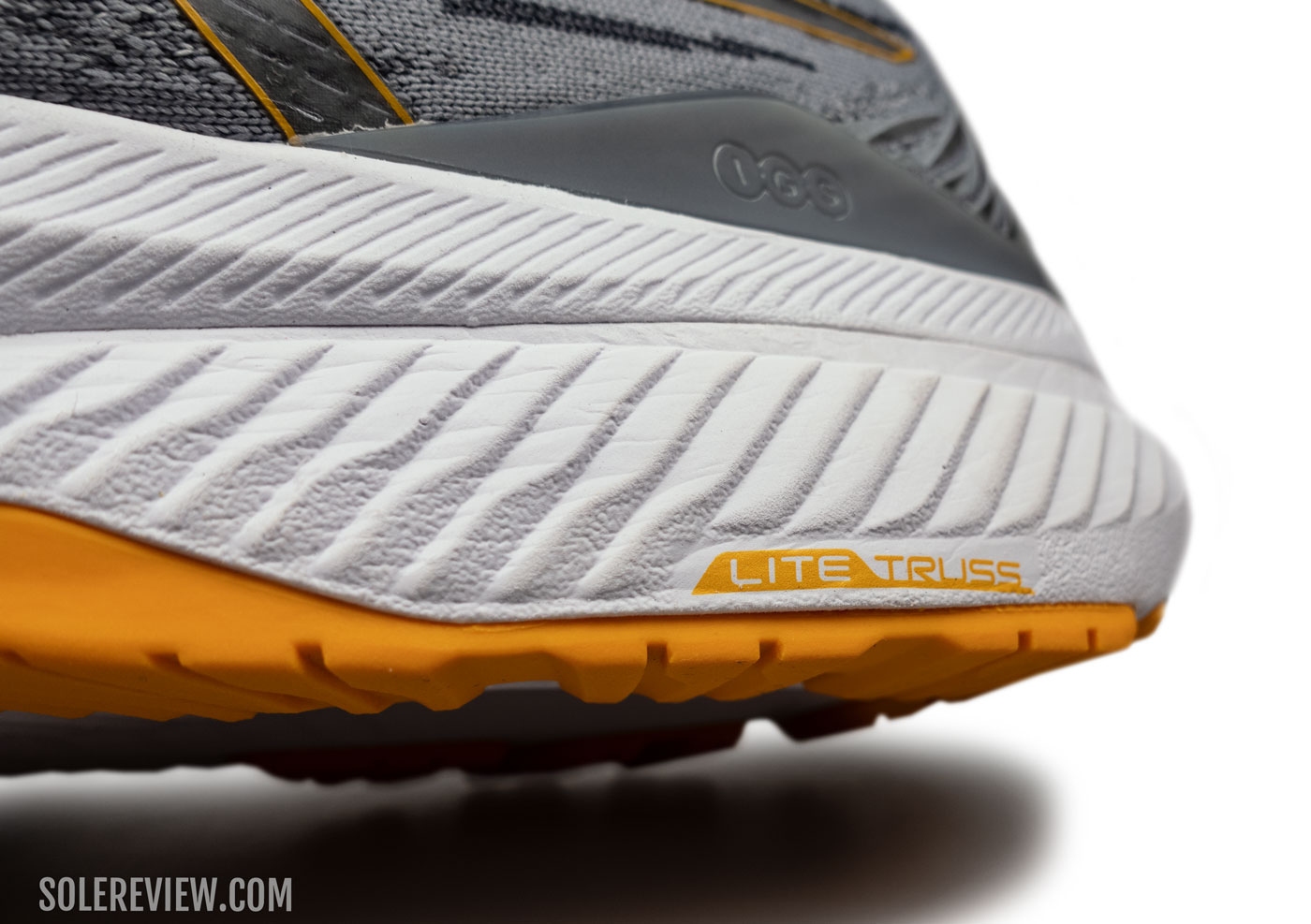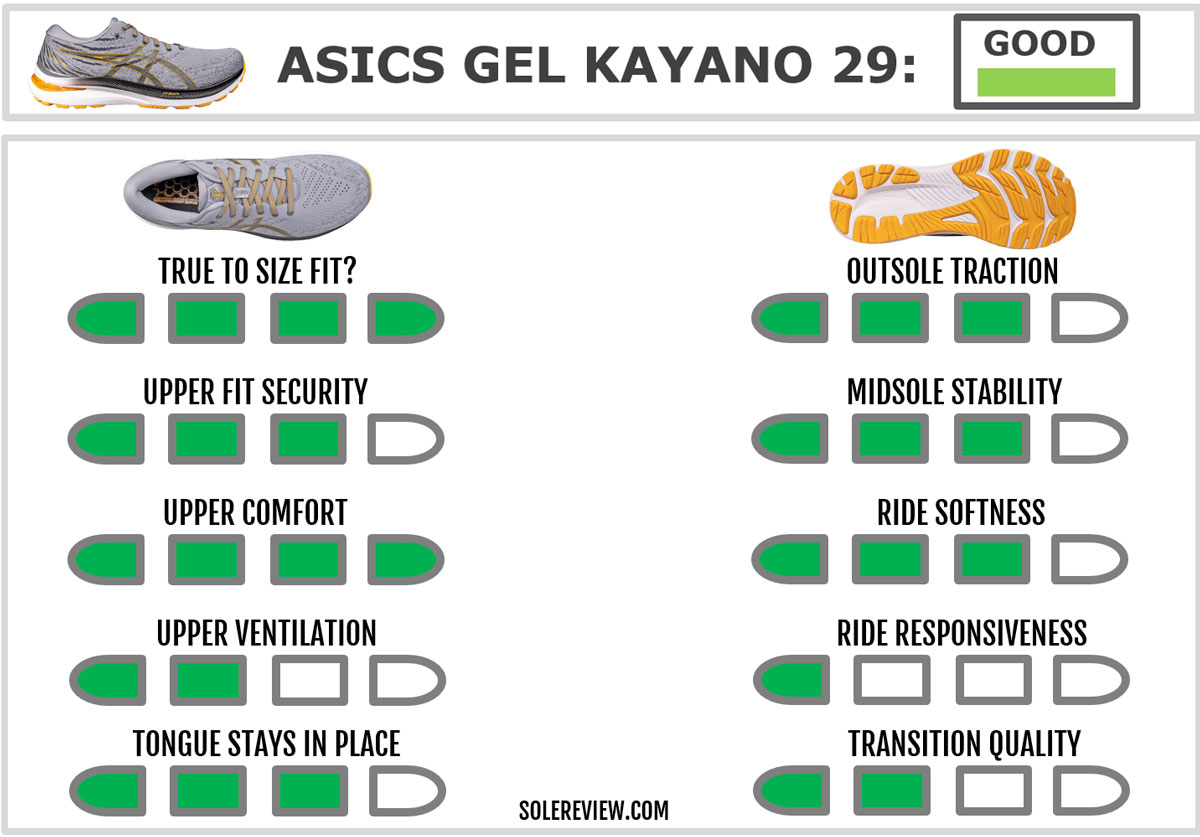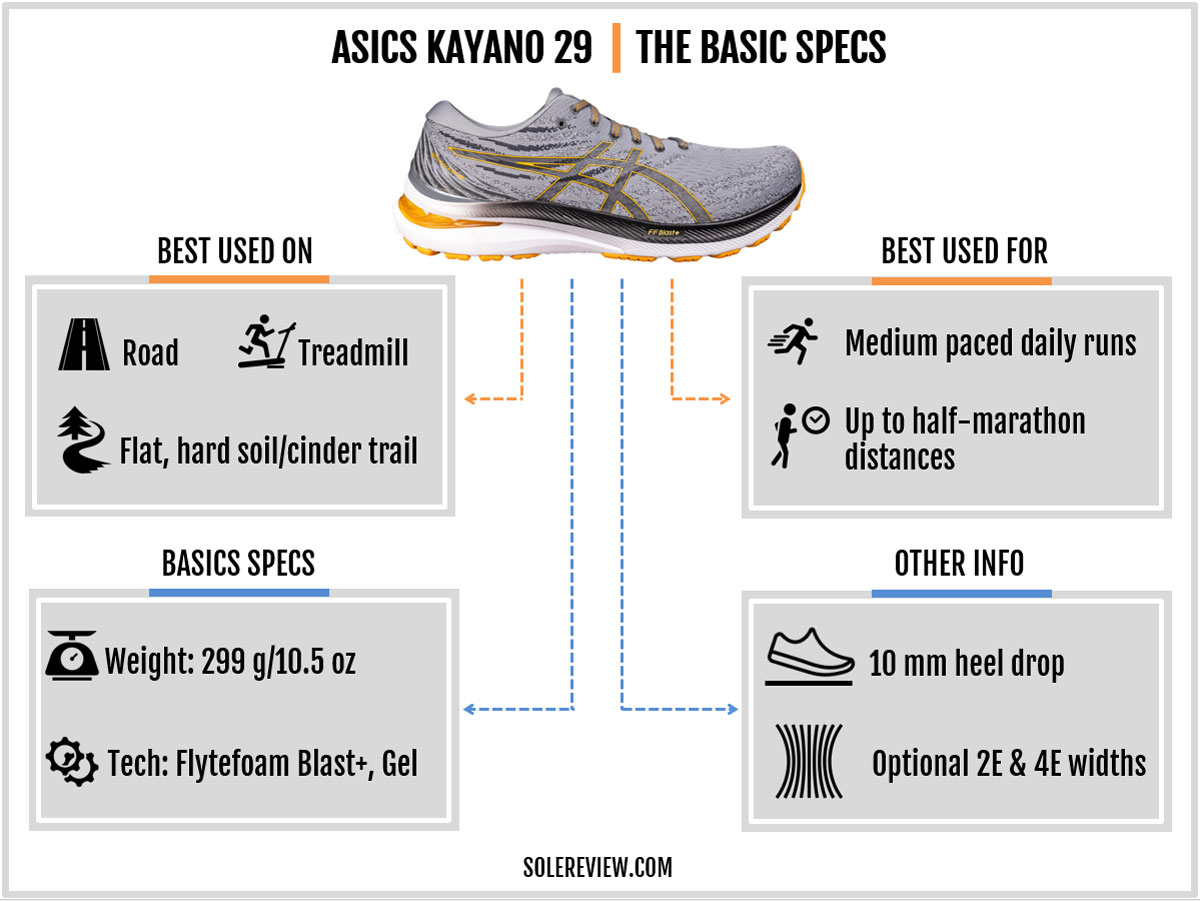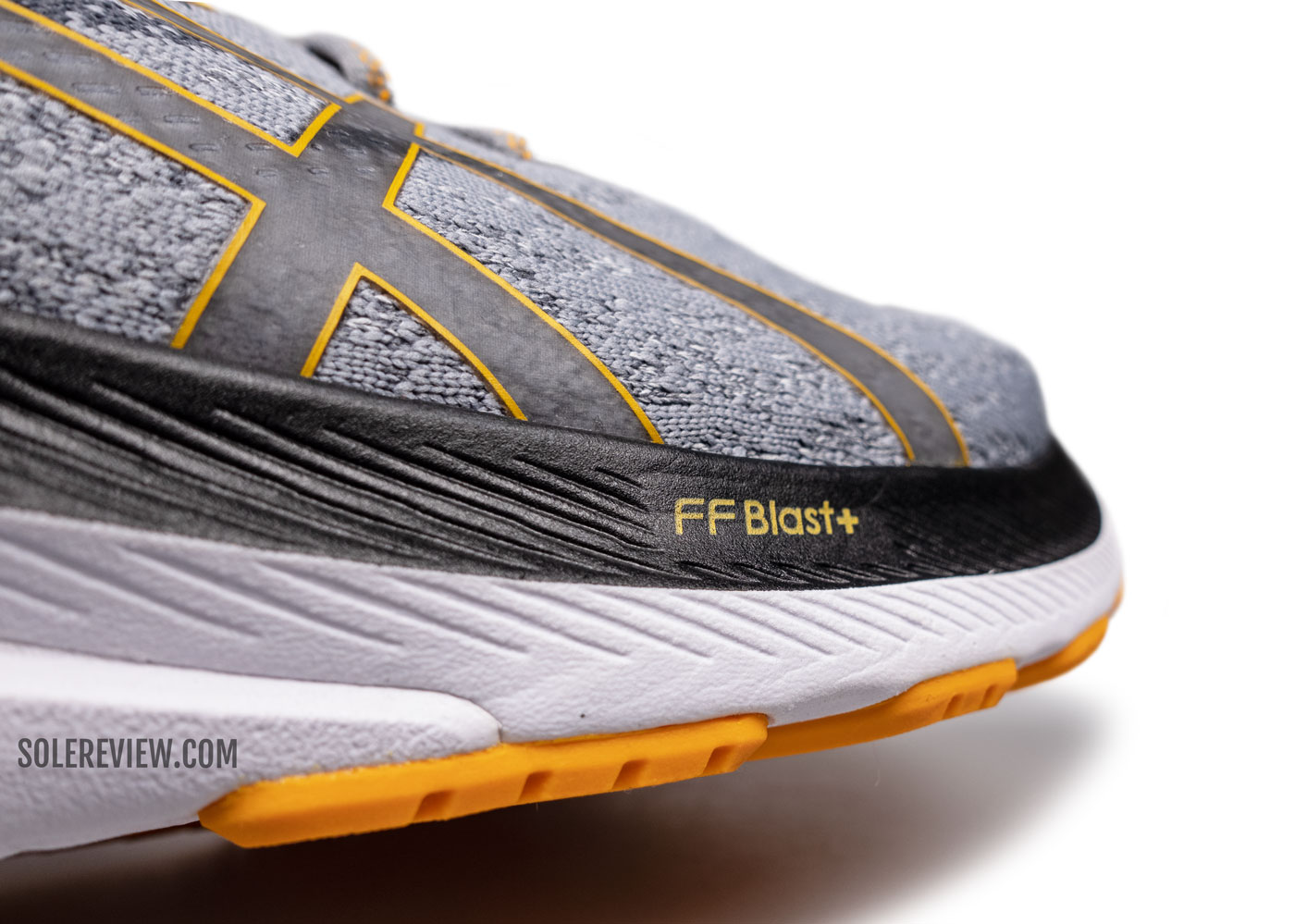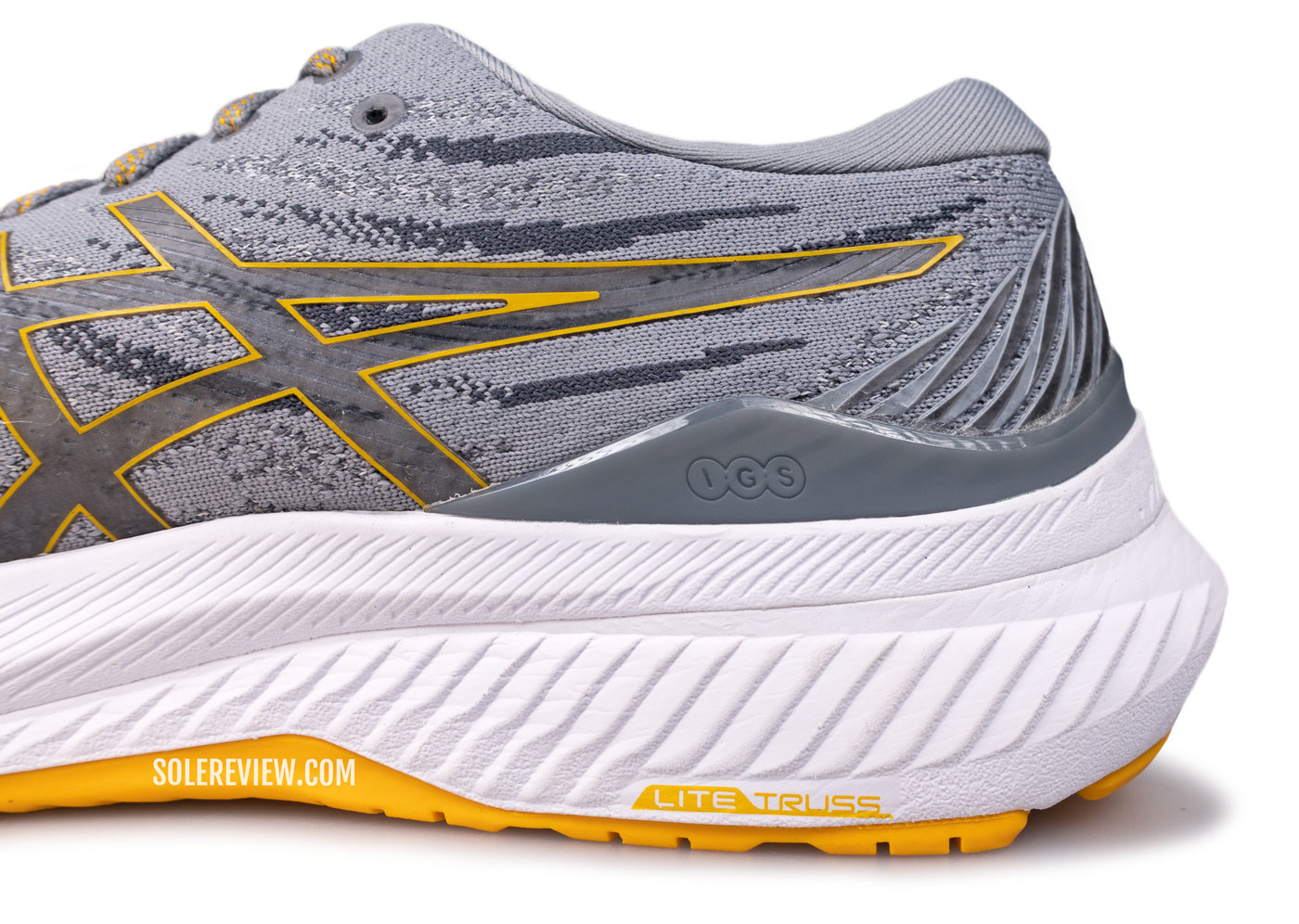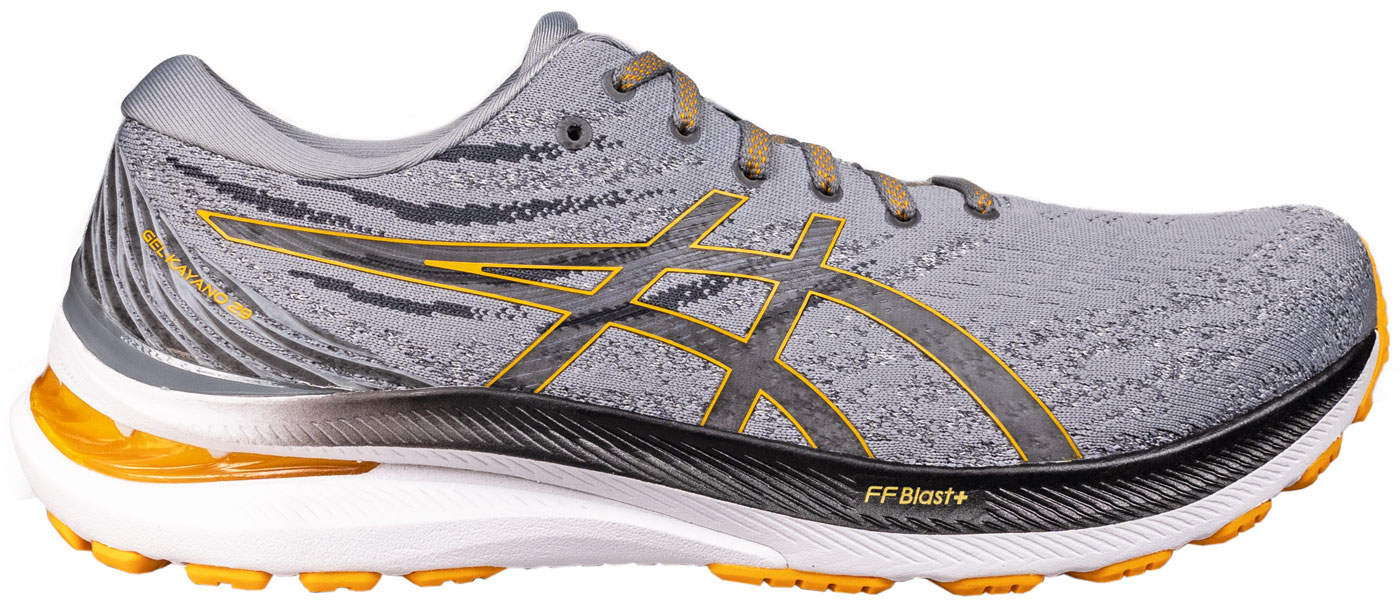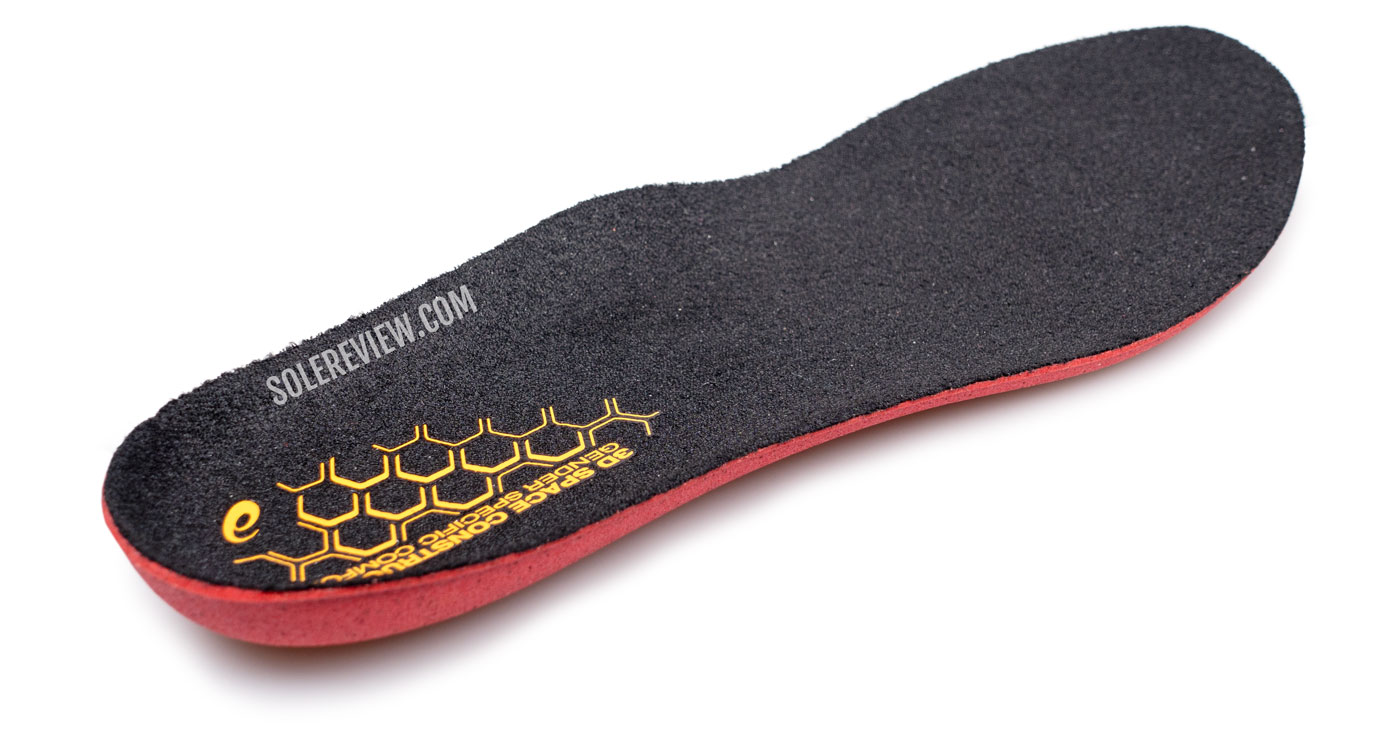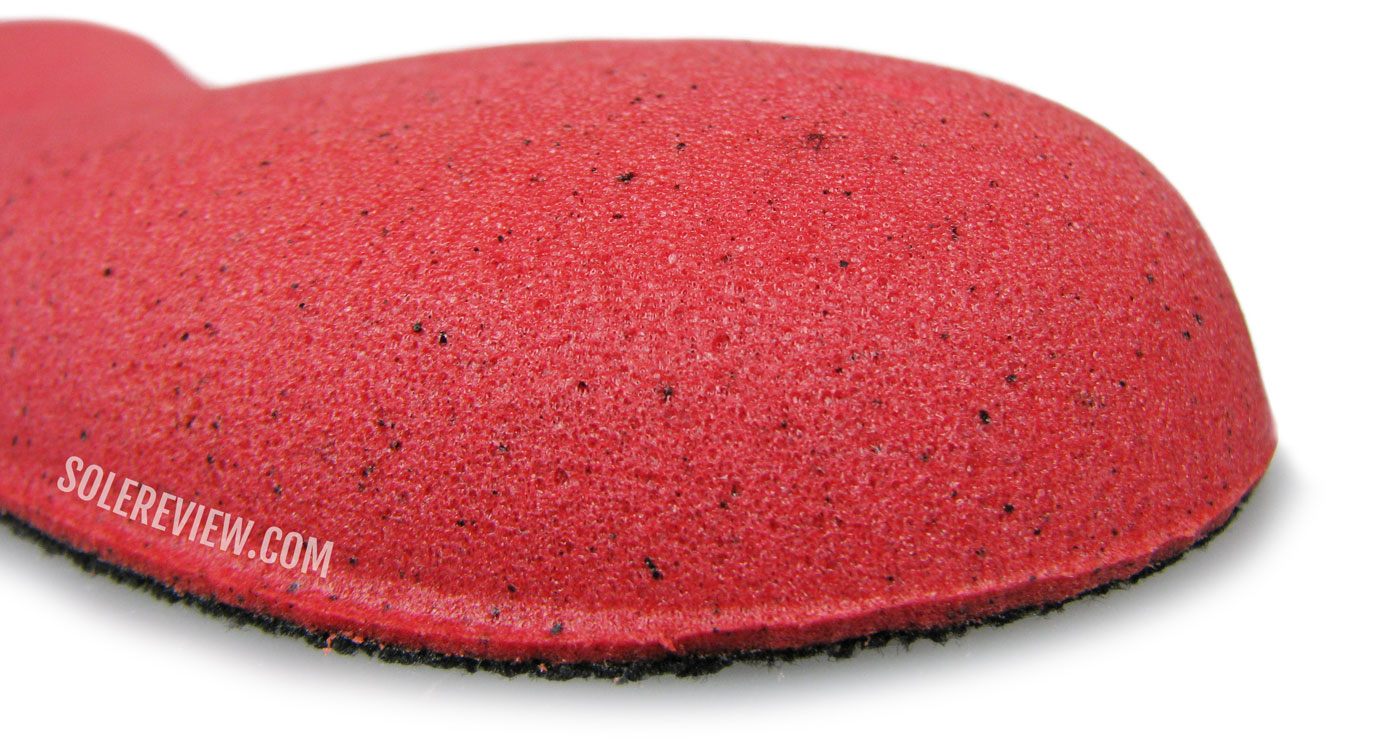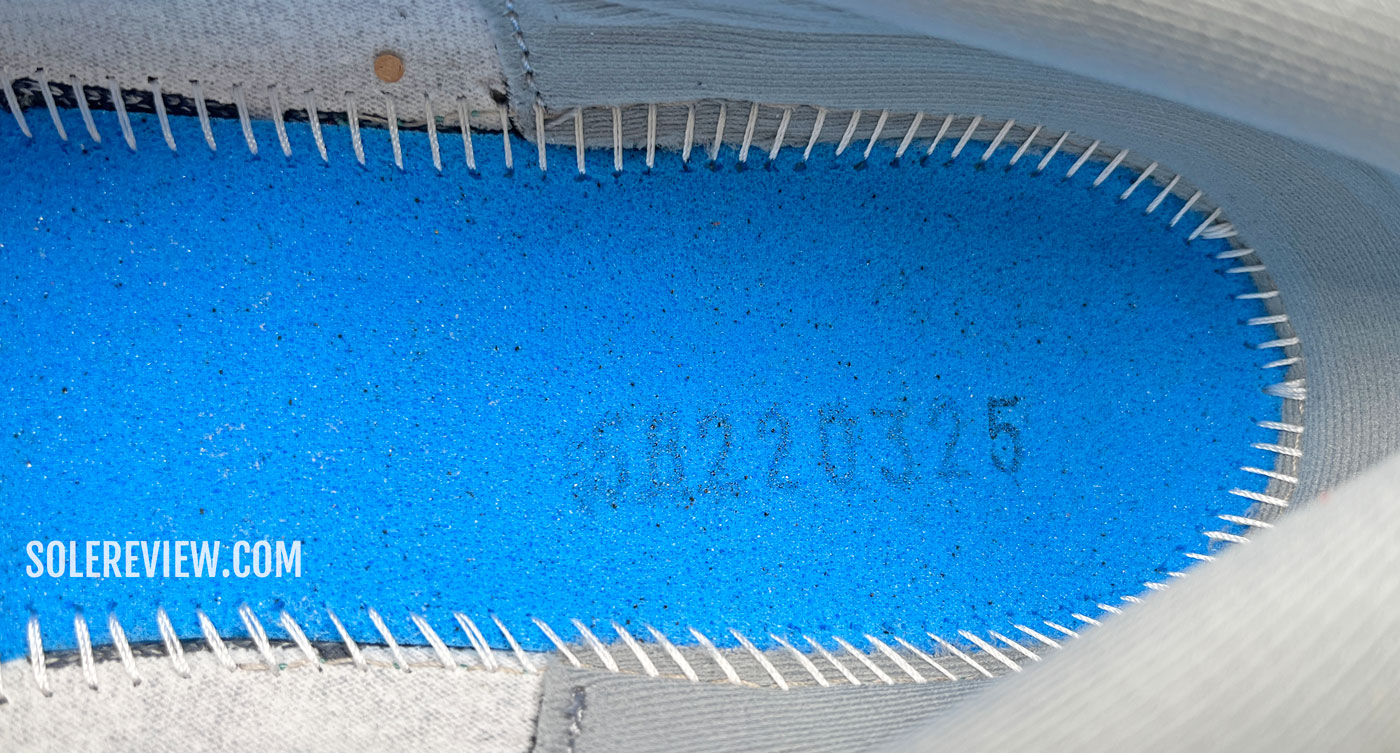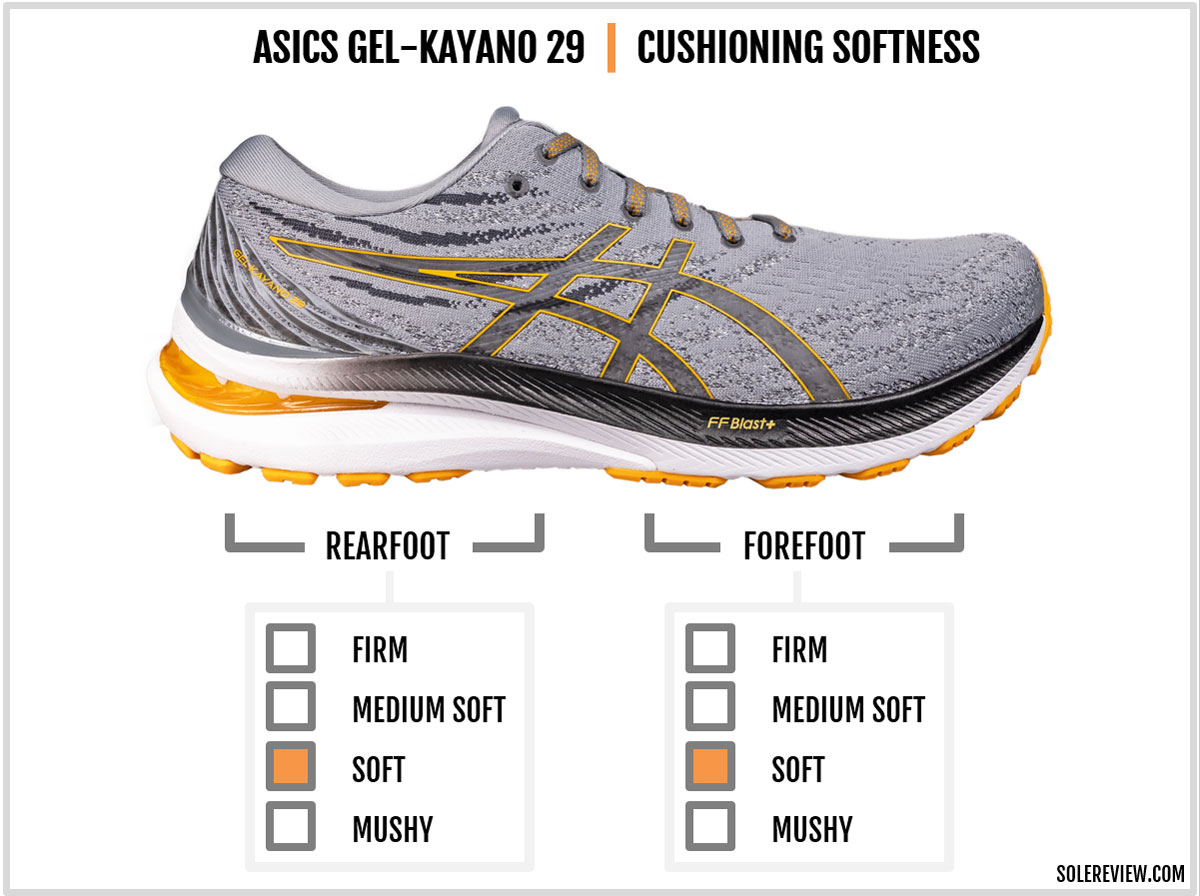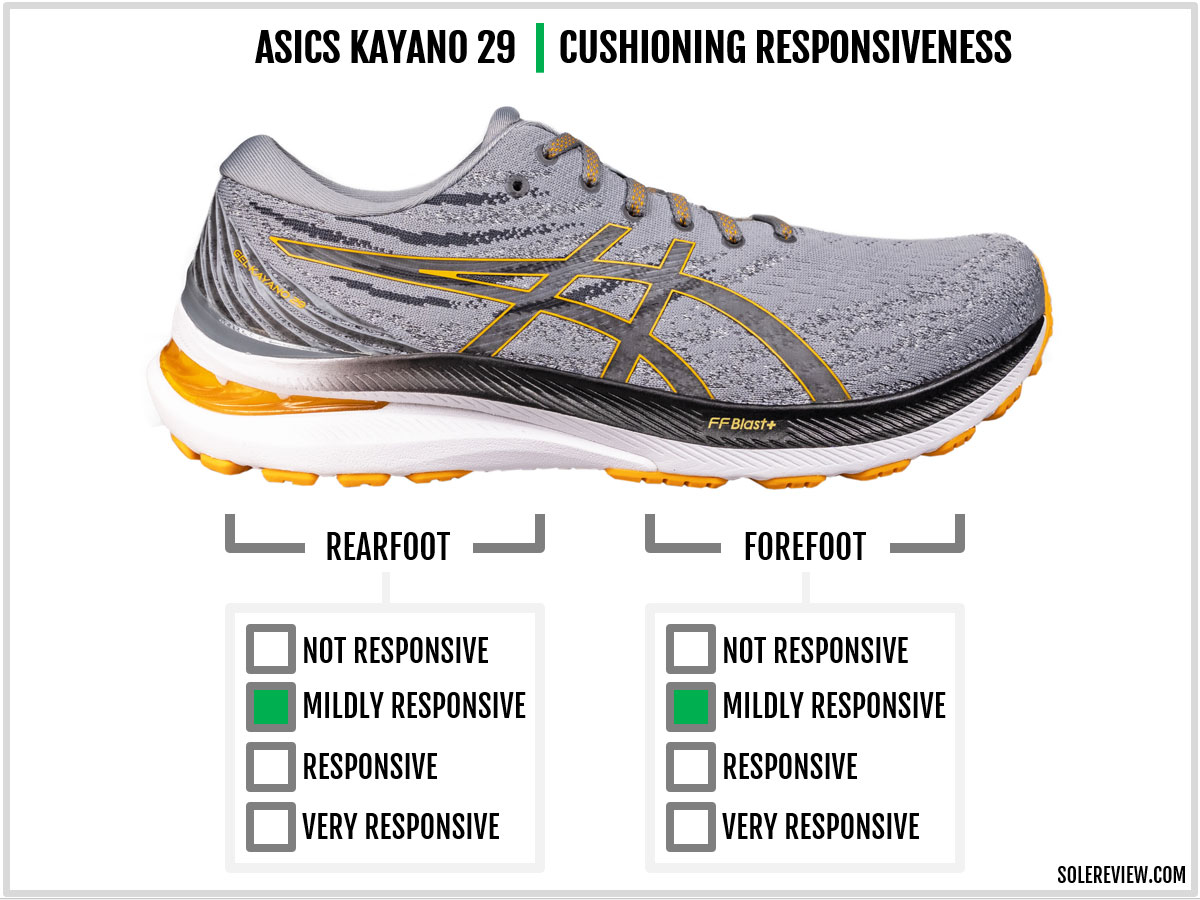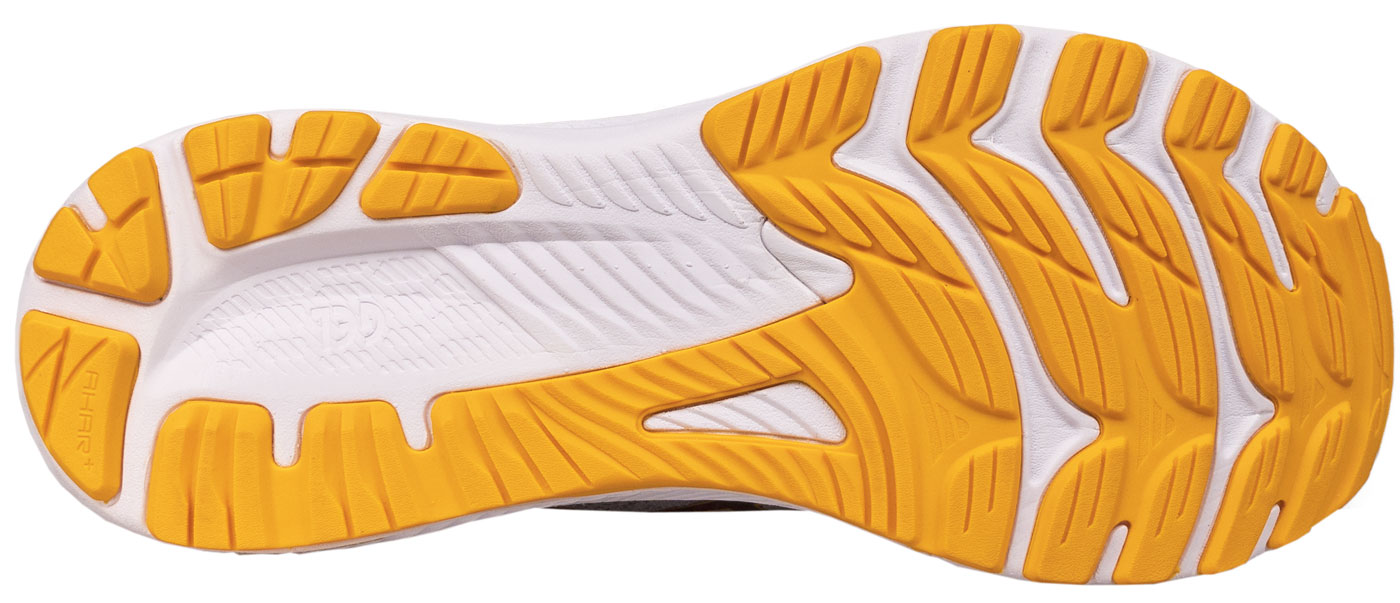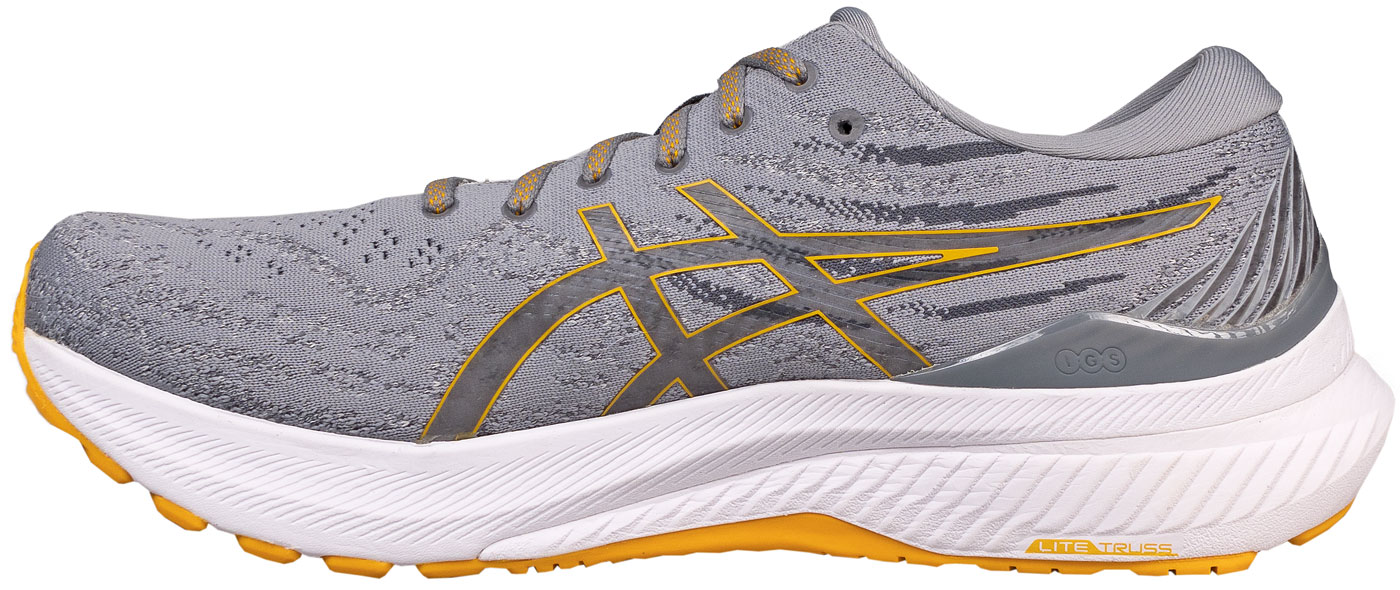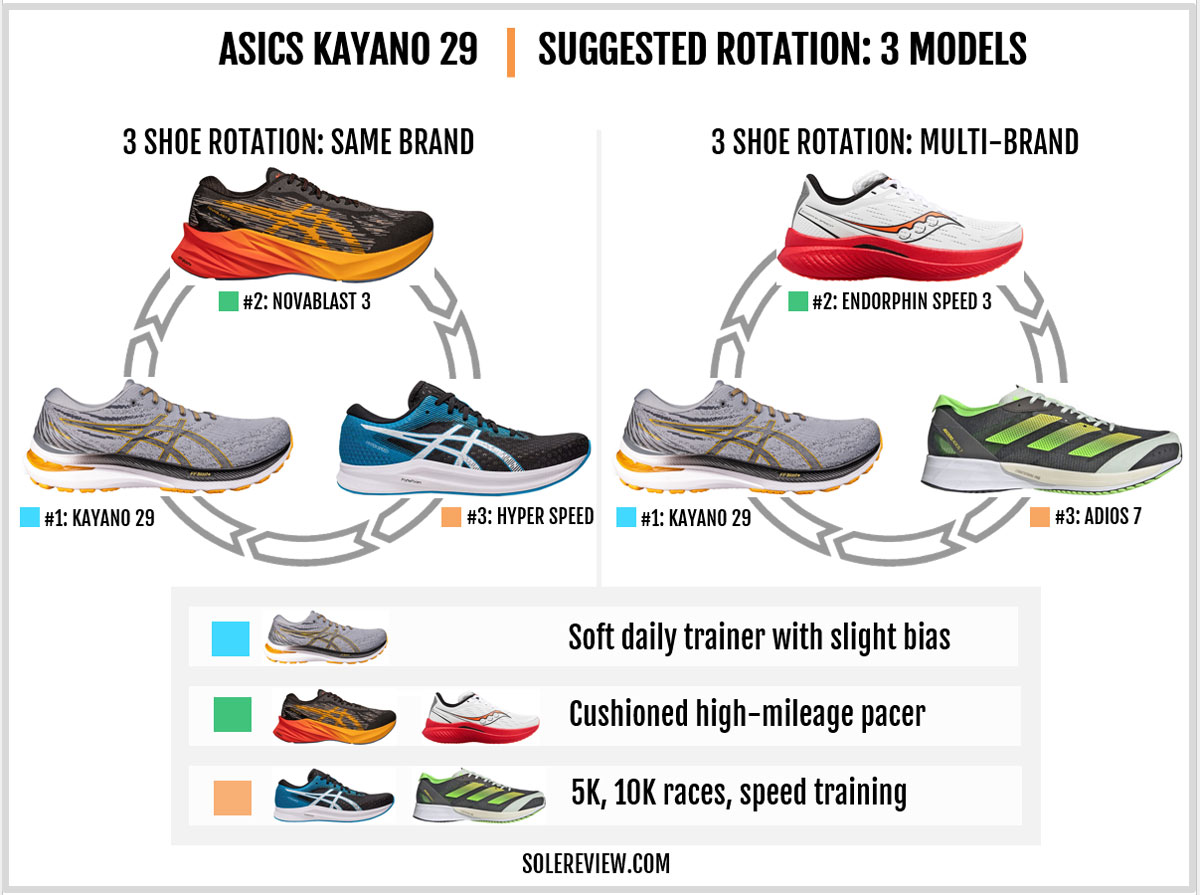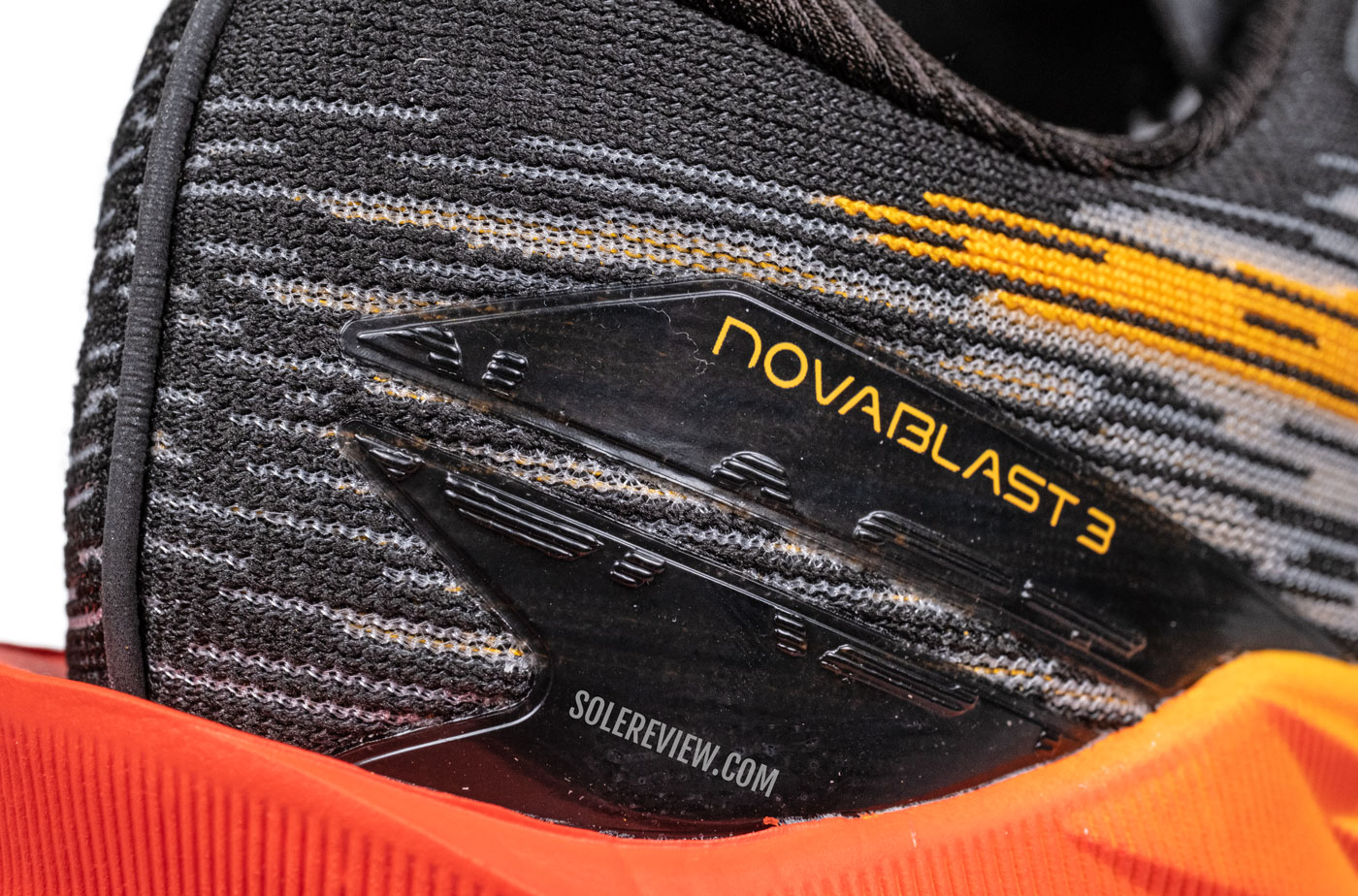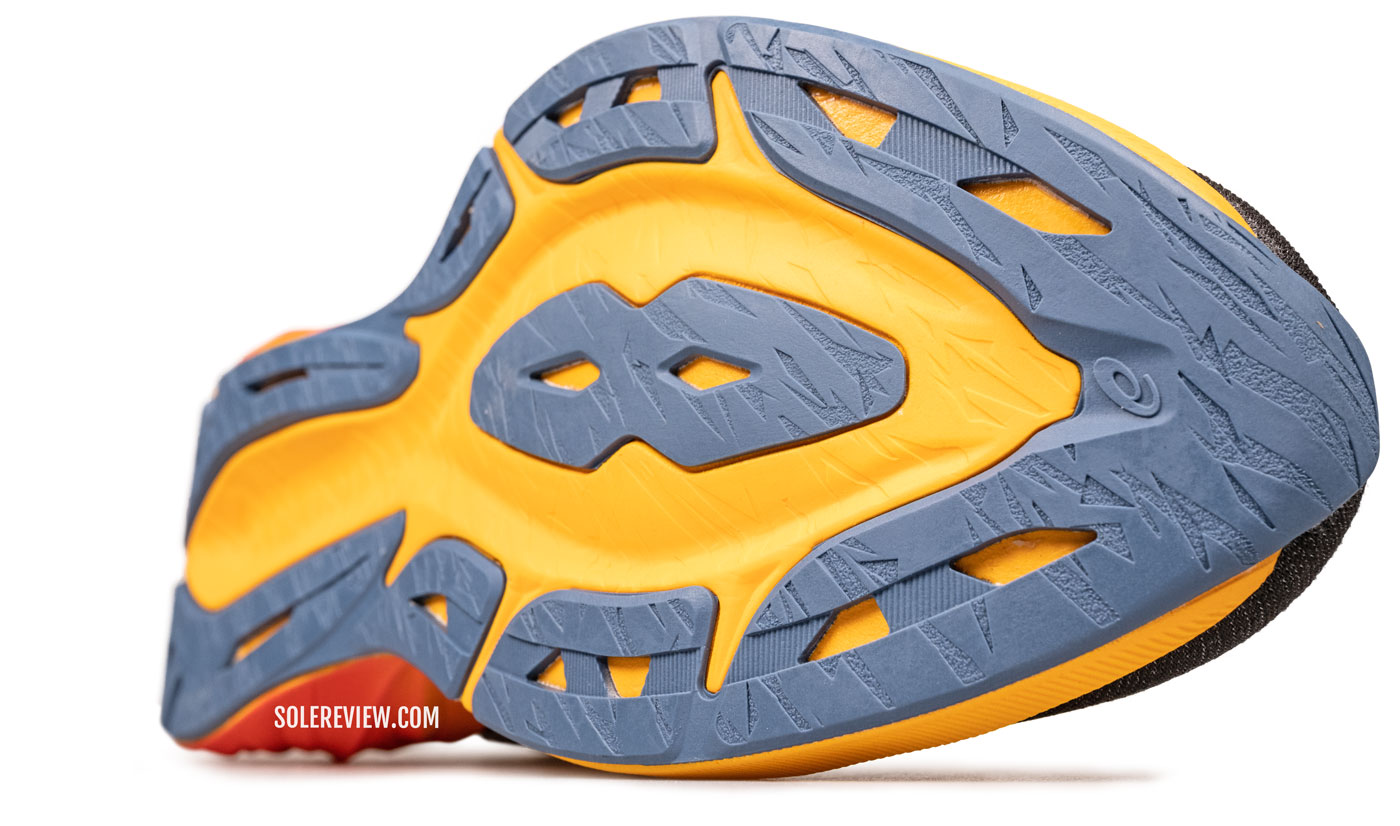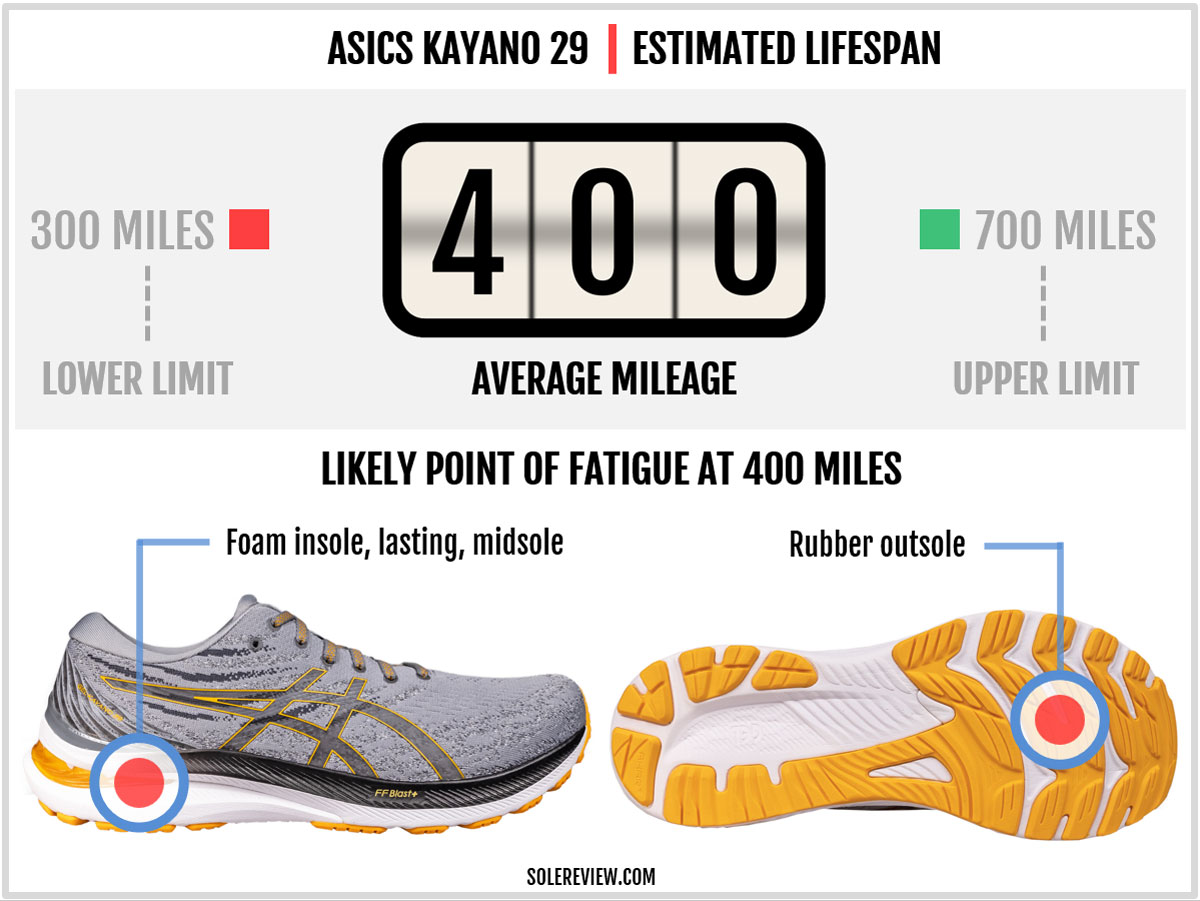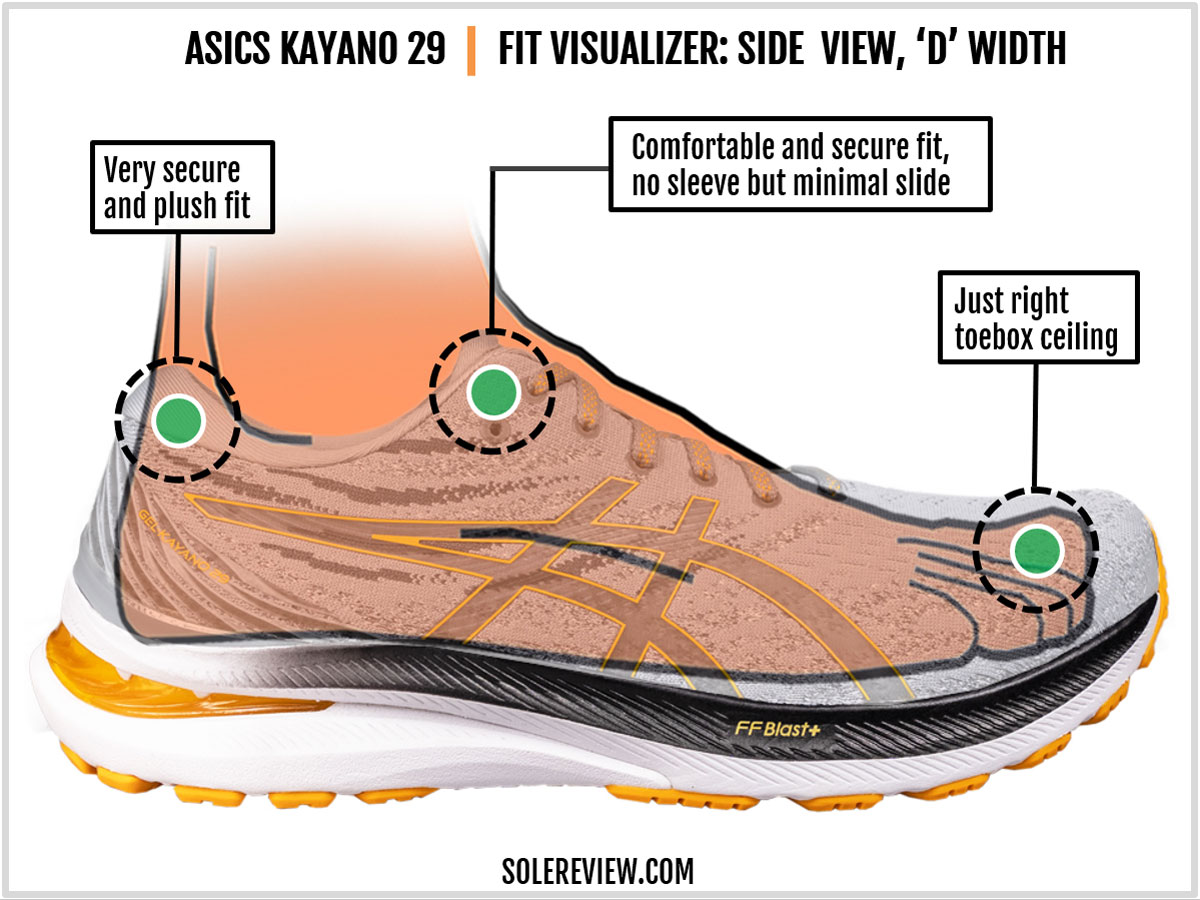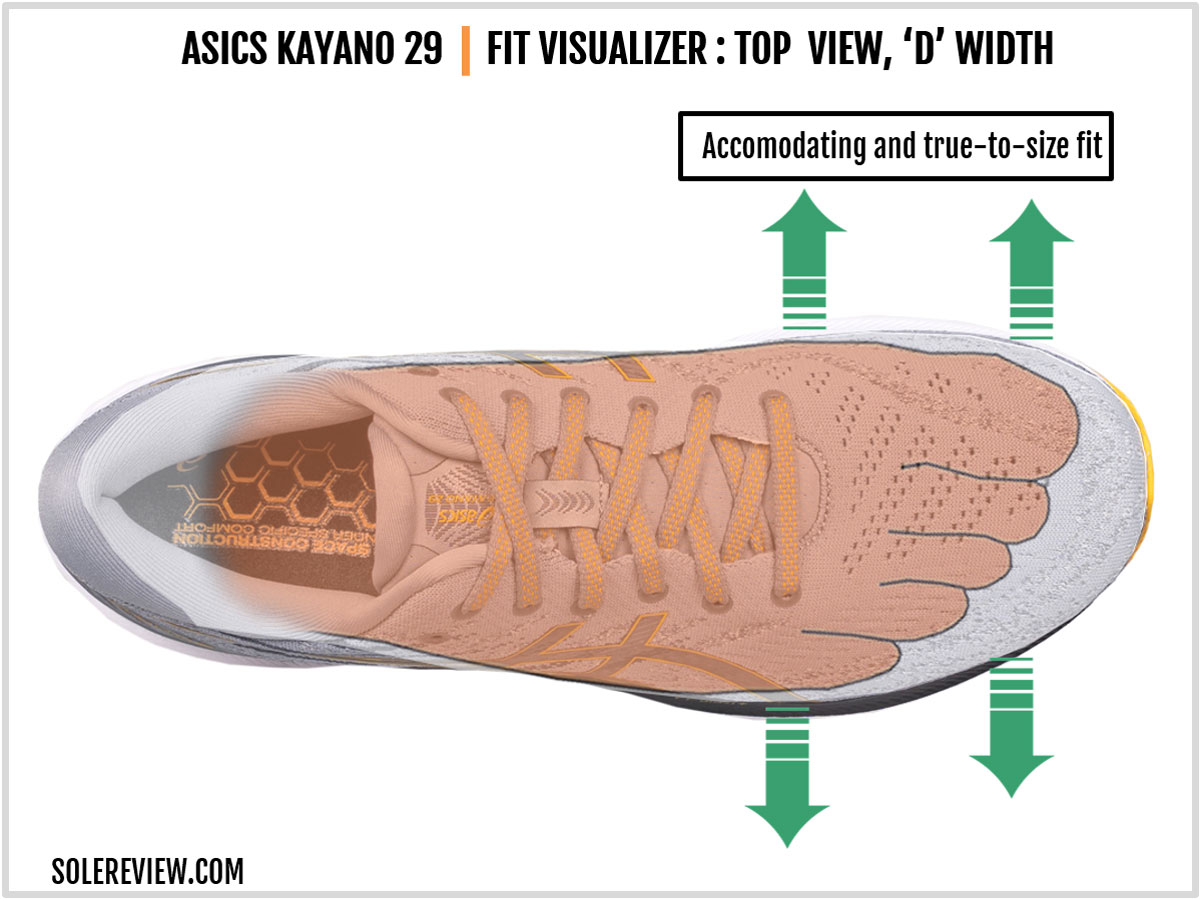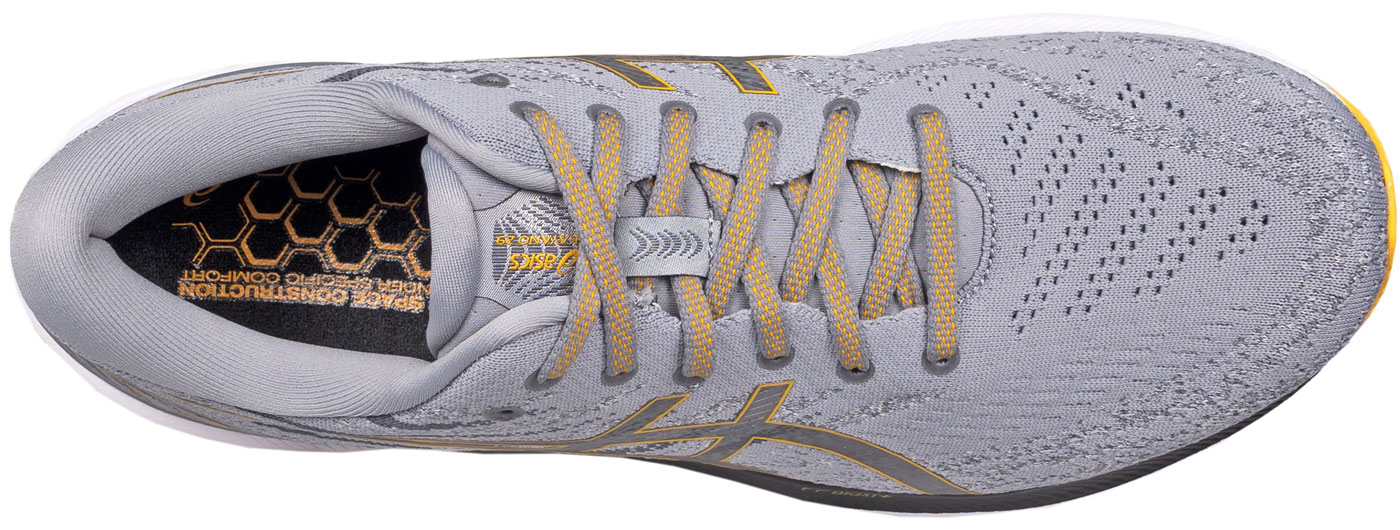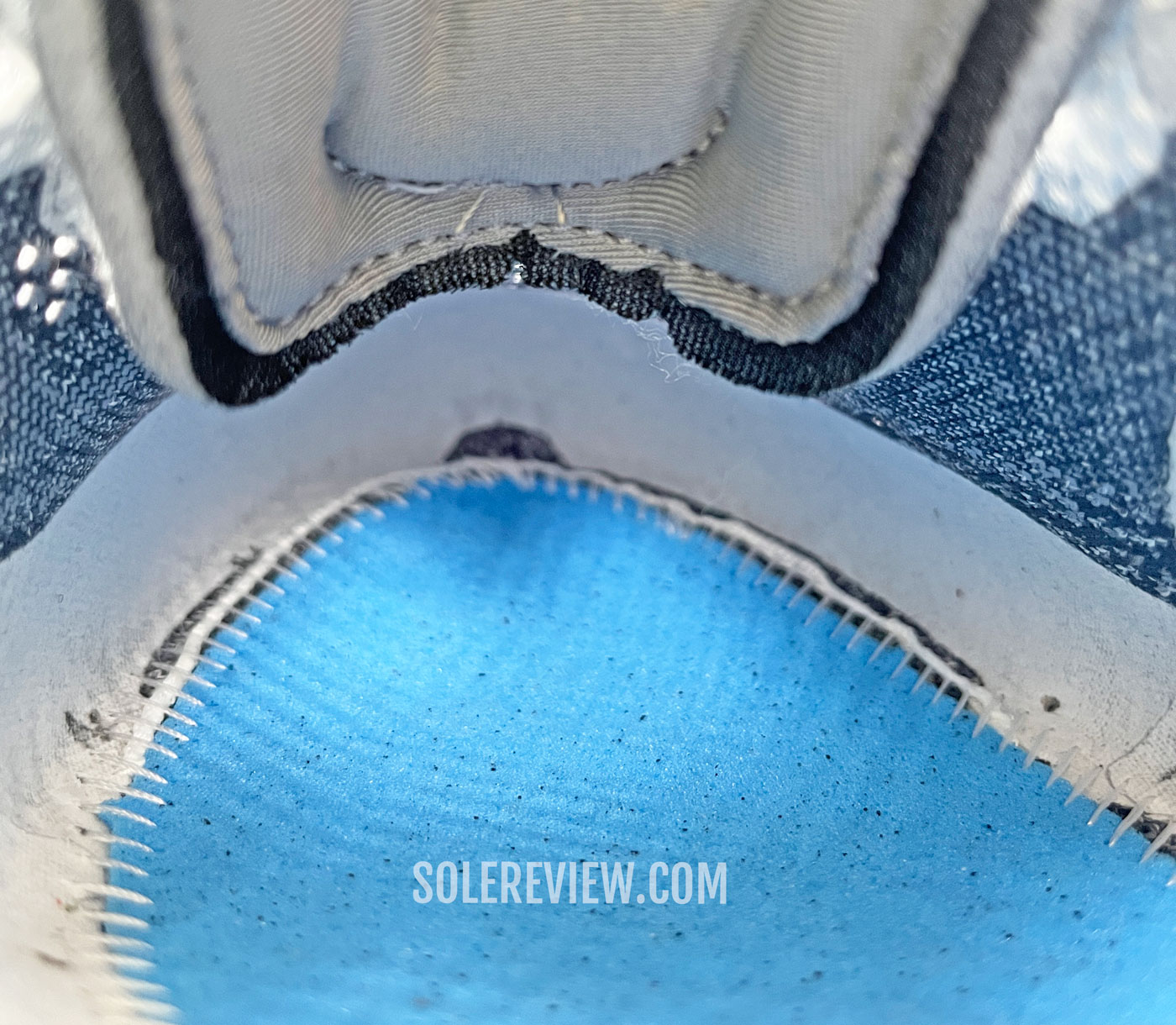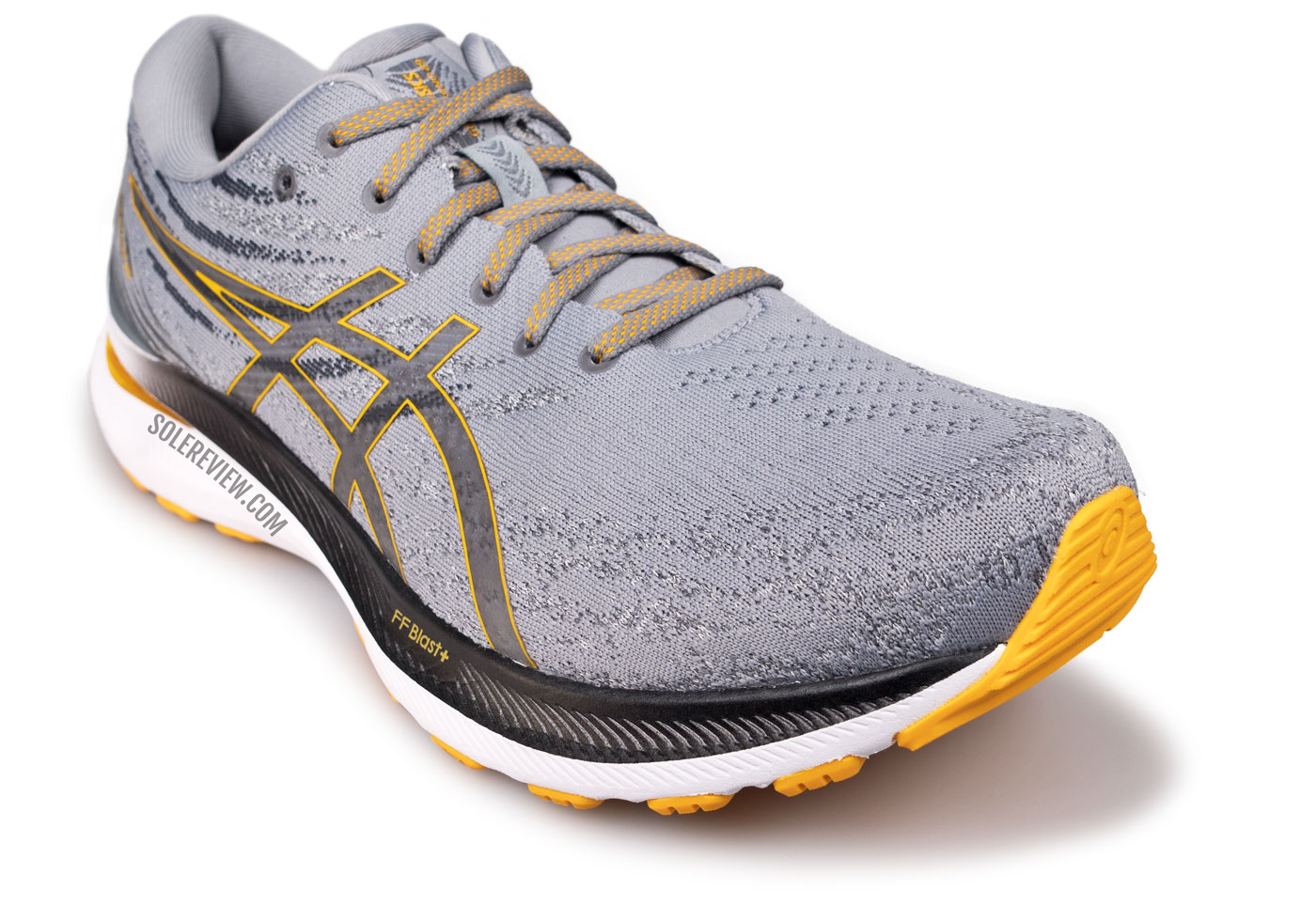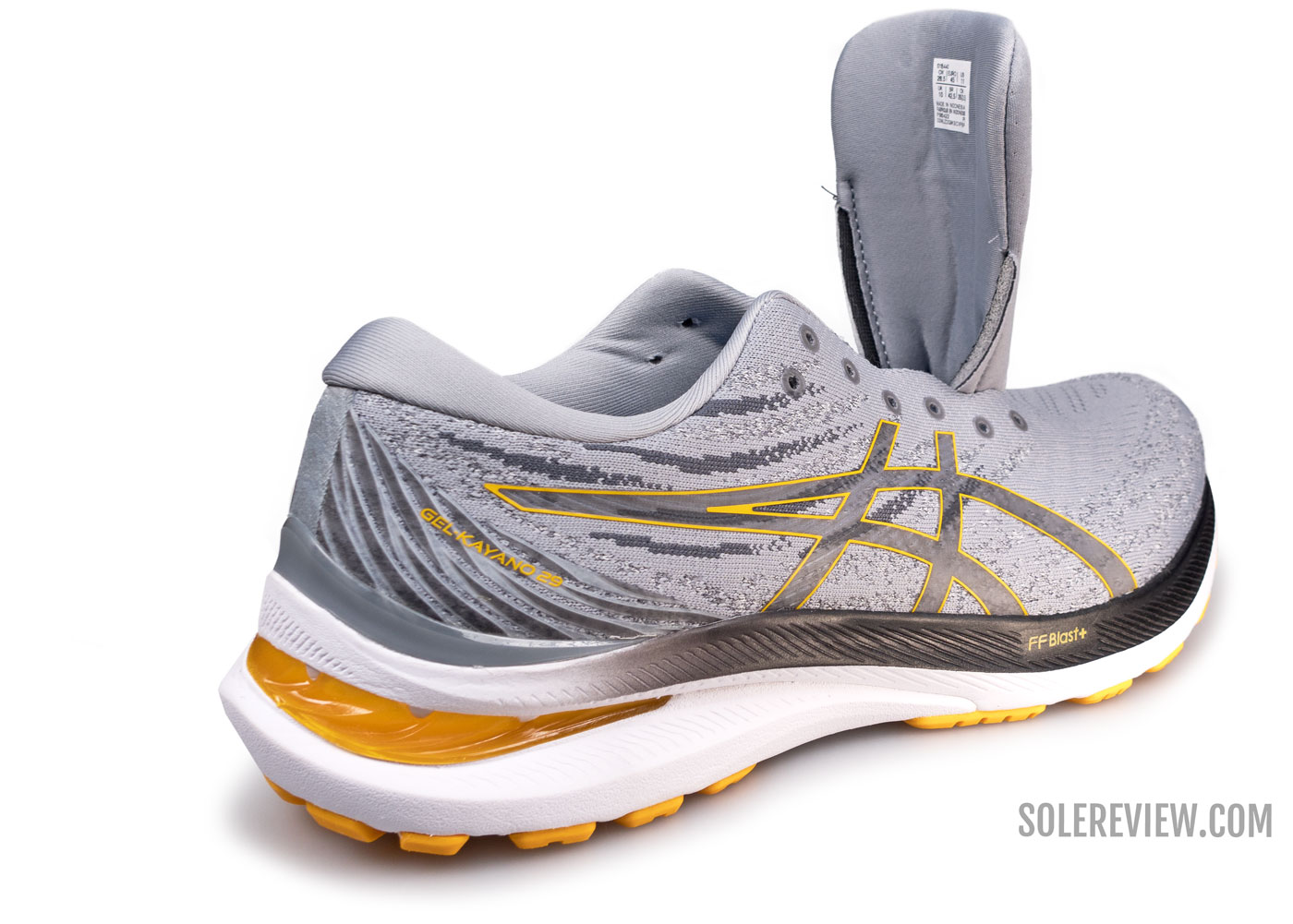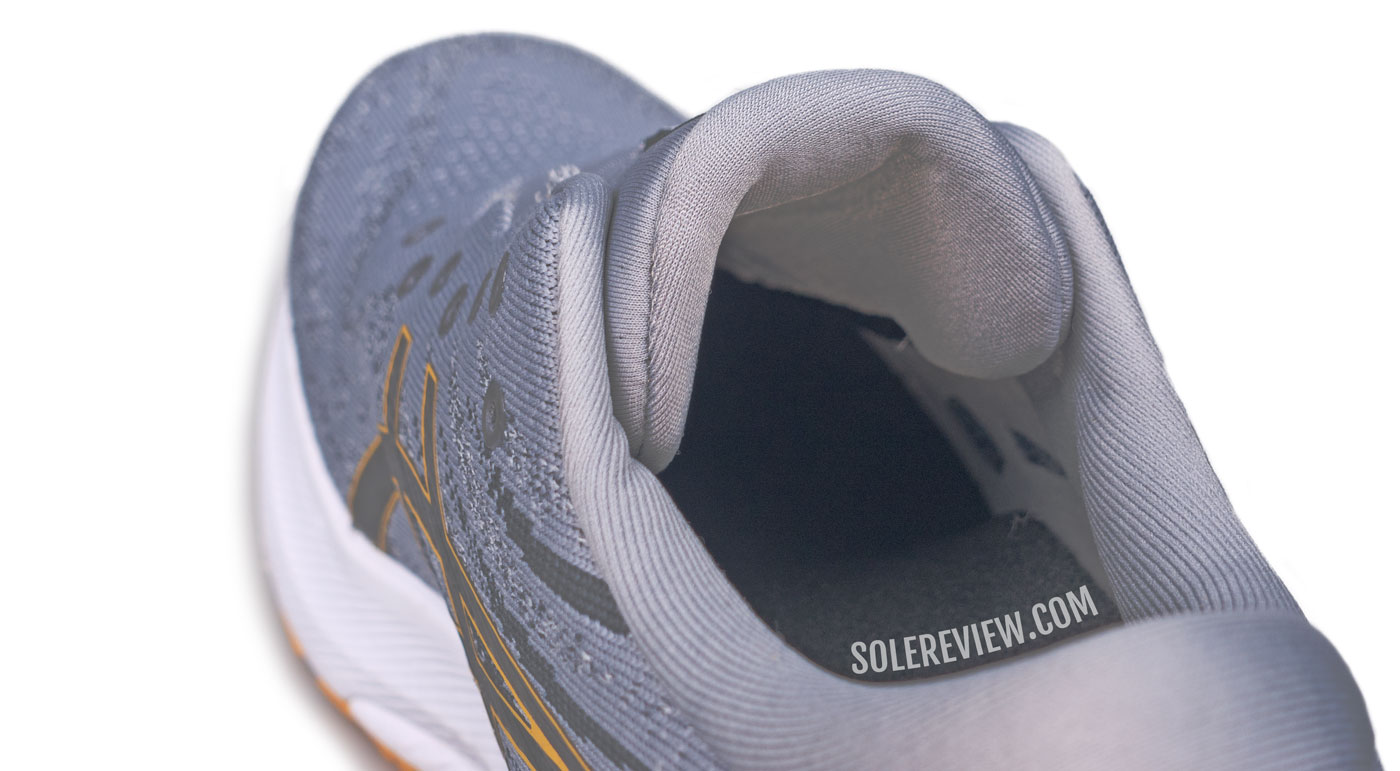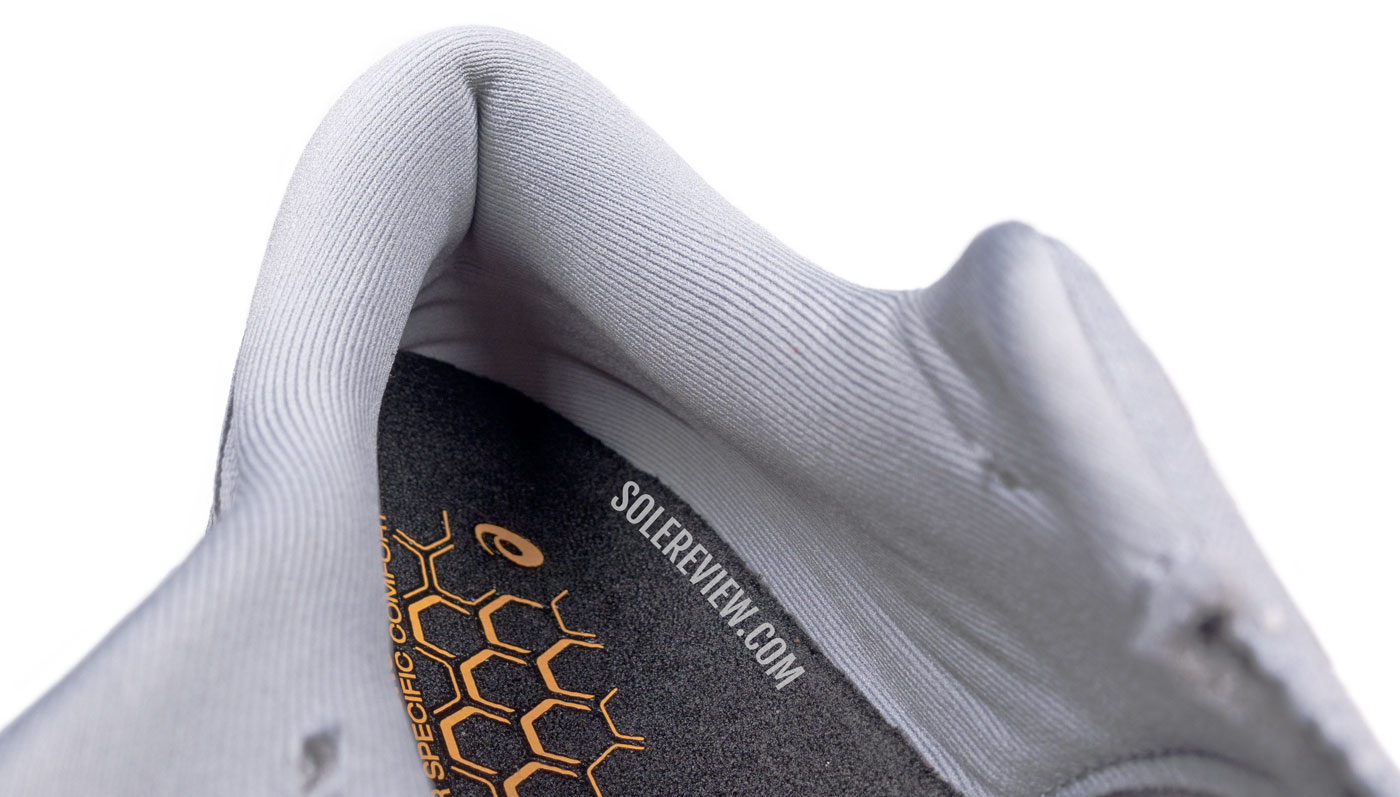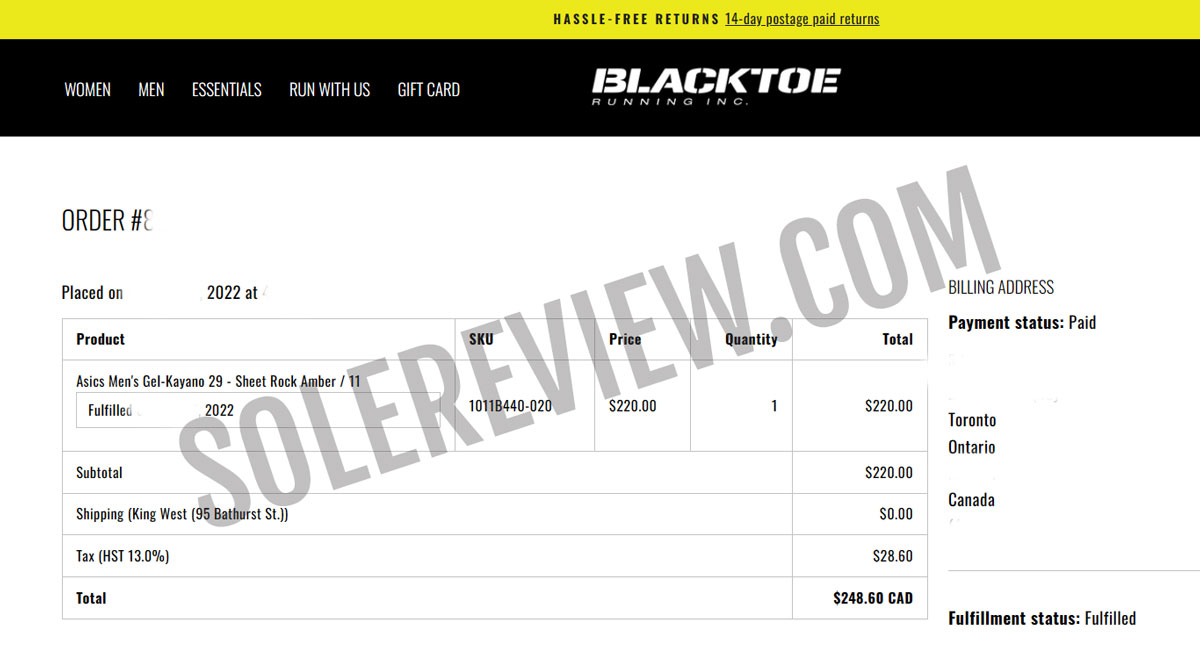
The Asics Kayano 29 was purchased at full retail price for our review. The amount is in Canadian Dollars.
In this review:
SUMMARY AND VERDICT
We imagine that three types of runners will be interested in reading a review of the Asics Kayano 29.
In the first group are die-hard loyalists of the Kayano – a stability running shoe series that has been around for nearly three decades. You like your shoe to have a medial post – a firmer wedge of foam that makes the inner midsole more supportive.
The running shoe industry is moving at a breakneck pace, so you await each Kayano update with bated breath. Some of you may also be biting your nails, apprehensive of the upcoming changes that could make or break your favorite stability trainer.
The second group has a stoic outlook on the evolution of running shoes, and does not care what happens to the Kayano. Nonetheless, you’re mildly curious (and somewhat invested) about what happens next.
Finally, we have readers who have never heard of the Asics Kayano before, so they have no idea what this shoe is about. This review should answer any questions they may have.
Thus, it’s fitting that we answer the most important question first – does the Kayano 29 have a medial post?
Yes, it does. Though Asics does not mention ‘Duomax’ (their term for a medial post), the firmer wedge is now called ‘Litetruss’.
As expected, this design gives the Kayano a motion-control ride character. The outer midsole (Gel side) is softer than the inner sidewall, so there’s a slight cushioning bias.
This means that the Kayano 29 and Kayano Lite 3 continue to be two different running shoes that do not cannibalize each other.
However, the bias isn’t very noticeable, so the Kayano 29 isn’t just for runners who want a medial post. On paper, the Kayano 29 is a traditional stability running shoe. On the road, it’s a capable and comfortable daily trainer for medium to slow running speeds.
And why should it not be? After all, the Kayano 29 is the softest Kayano ever.
THE ASICS KAYANO 29 COMPARED WITH KAYANO 28
Over the last few years, the Kayano 29 has followed a standard update formula. Which is to shrink the medial post and plastic footbridge while making the ride marginally softer each time.
And that’s exactly what happens to the Kayano 29. Not only is the midsole softer (Flytefoam Blast+ now), but the plastic shank (Trusstic) has also disappeared.
Speaking of fit, the upper is similar to the Kayano 28. The upper fits true to size and uses soft materials to create a plush interior. The plastic heel clip has been downsized, so the Kayano 29’s external heel clip is more supportive on the inner side than it is on the outside.
It’s not wrong to assume that the Kayano 29 is a toned-down version of the Kayano 28, because it is.
The loss of the plastic midfoot shank and increased softness makes the shoe more comfortable, but it sacrifices some stability in the process.
THE MIDSOLE DESIGN AND RIDE EXPERIENCE
The Kayano 29 is the softest it’s ever been; the ride is borderline plush at walking speeds. It’s as soft as the Cumulus 24, if not the Nimbus 24.
With a heel-to-toe offset of 10 mm, the midsole cushioning is heel-loaded. There’s also a lot going on in the rear. There’s a layer of firmer Flytefoam on top, followed by a visible Gel unit/medial post, and finally a soft foam crash pad.
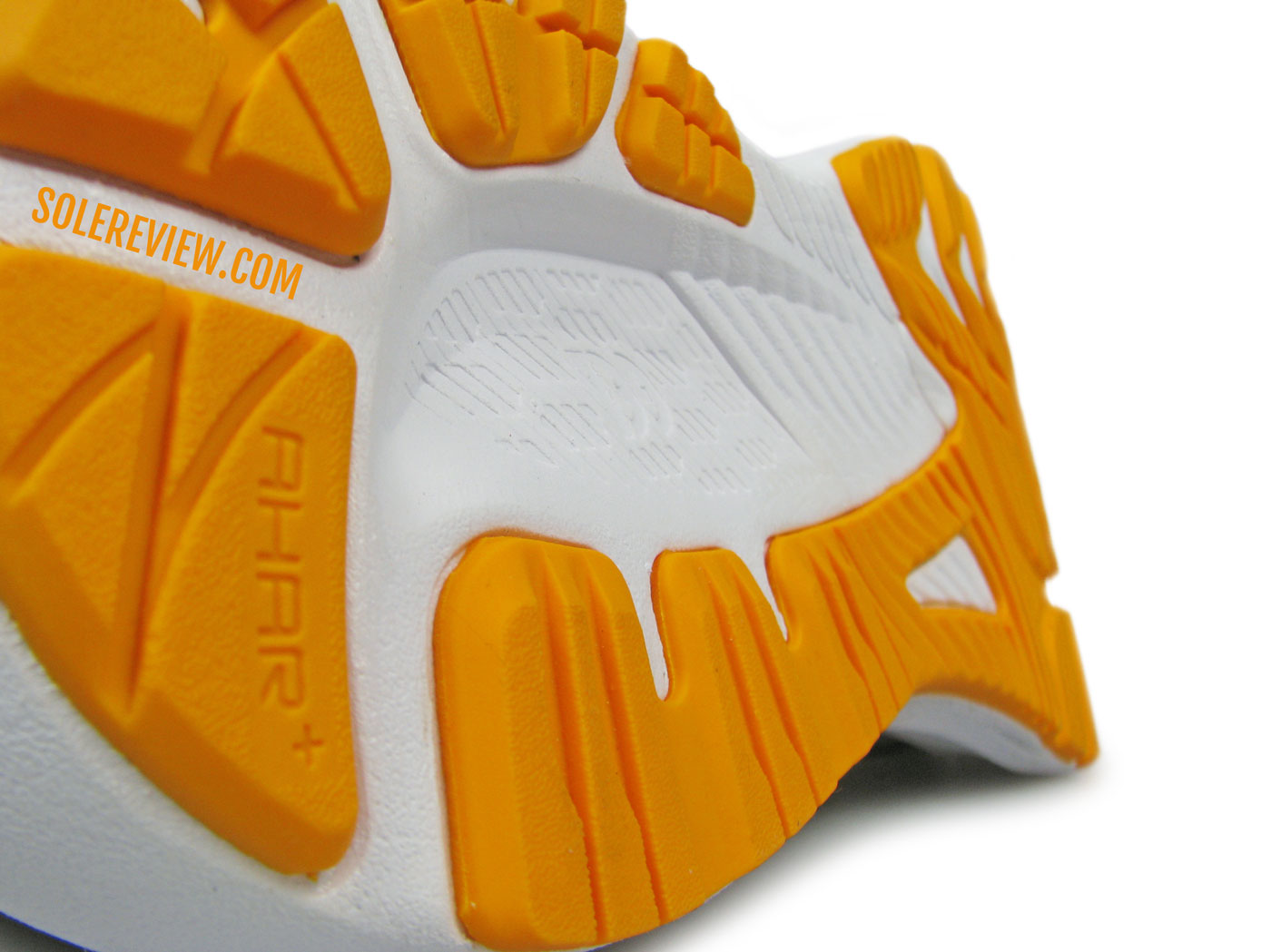
The ‘3D space’ under the heel is deeper on the outer side, thus making the inner midsole more supportive.
There’s a shallow negative space under the heel that Asics calls ‘3D space construction’. It’s asymmetrically skewed to the outer side, thus making the outer midsole softer than the inner side.
As always, the Kayano 29 comes standard with a soft foam lasting and removable insole.
Together, these parts create a softly cushioned rearfoot. While the single-density forefoot is also soft, it feels muted in comparison.
If your idea of a running shoe is a fast and transition-friendly pair of footwear, you won’t like the Kayano 29. While not sluggish, the Kayano isn’t the shoe for setting personal bests.
The midsole doesn’t have a rocker profile, and the forefoot has decent flexibility. Therefore, you won’t get the quick touch-and-go road manners of the Novablast 3 (not that the two are comparable). The Flytefoam Blast+ isn’t bouncy, at least not in its current configuration.
A speed range of 5:00 min/km (8 min/mile) or slower is where the Kayano 29 feels most at ease. There’s a generous amount of cushioning available under the foot, so running mileage isn’t a concern – half-marathon distances are well within its performance boundaries.
Even though the Kayano 29 has a medial post, the cushioning bias isn’t distracting.
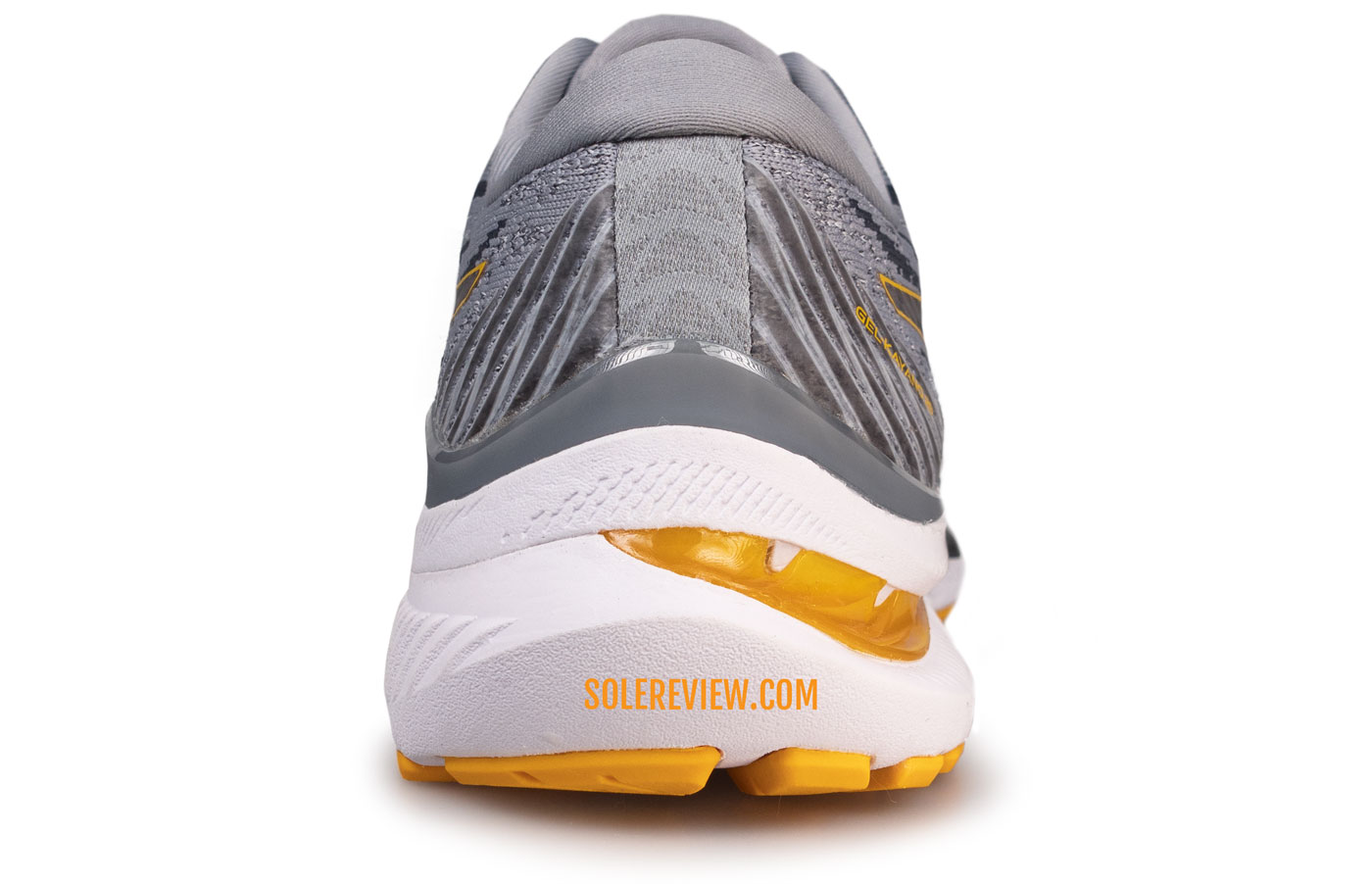
The Kayano 29’s heel has a mild cushioning bias that favors the outer (Gel) side. Nonetheless, it’s fairly supportive.
There’s a sense of firmness under the heel (on the medial side), but it doesn’t press against the foot. This also has to do with how medial posts are designed nowadays.
In the old days, the firmer wedge of foam occupied the entire midsole stack – the 2011 Kayano 17 was a good example. The medial posts were much larger as well.
That isn’t so with the Kayano 29; there’s a softer section of foam over the medial post, so that gives the ride a semi-neutral flavor by toning down the firmness.
The Gel window is the smallest it’s been in years, so that also helps with the overall stability. The outsole now bridges the midfoot on the medial side, and that increases the contact area. The outsole traction is excellent; the blown rubber (softer) forefoot sticks well even on damp roads.
The Kayano has always been a rearfoot striker’s running shoe. It made sense, considering that the entire cushioning tech is stacked in the rear.
However, that’s not the only reason why we recommend the Kayano 29 for heel strikers.
The new midsole has a design flaw. The forefoot edges press against the foot – this is at the meeting point of the forefoot and arch. This becomes more noticeable if you land forefoot/midfoot; not so much so for rearfoot strikers.
It takes around 50 miles for the edges to break in, but the sensation doesn’t disappear completely.
Of late, Asics is pushing out new midsole designs every year instead of re-using them. Maybe it’s not a bad idea to return to a biannual update for their midsoles so that any minor issues are caught (and rectified) in the development phase.
RECOMMENDED ROTATION
The Kayano 29 is found wanting in high-speed capabilities, so the Novablast 3 and Hyper Speed 2 fill that void.
The Novablast 3 is a cushioned high-mileage trainer with an engaging ride and transition-friendly midsole. The thick stack and rocker profile offers an excellent balance of ride comfort and tempo road manners.
On the other hand, the Asics Hyper Speed 2 is a low-profile speed trainer that works best for short races.
The Novablast 3 can be substituted with the Saucony Endorphin Speed 3 for a snappier and softer ride.
The Speed 3 has a PEBA foam midsole and Nylon plate for the signature ride quality. The adidas adios 7 is an alternative to the Hyper Speed 2, but it’s worth mentioning that the Hyper Speed 2 offers superior value for its $90 price.
IS THE ASICS KAYANO 29 DURABLE?
The best thing about a tried-and-tested formula is its predictability. The Kayano hasn’t changed all that much over the past few years, so it’s no more or less durable.
The compression-molded midsole and rubber outsole are good at maintaining their structural and functional integrity. The same goes for the thick mesh upper.
A median lifespan of 400 miles is what one should expect of a Kayano.
THE UPPER DESIGN AND FIT
There are no surprises on the Kayano 29’s upper; it’s exactly what runners have come to expect over the years.
The true-to-size upper fits securely, and with a generous dose of interior plushness. The tongue and heel use soft lining and quilting for comfort, and the one-piece exterior has a smooth fit.
The upper mesh isn’t elastic, but it offers an accommodating fit in its standard width (D) version. A wide (2E) or extra-wide (4E) is an optional purchase. The internal bumper creates dedicated toe-box room.
The knit mesh is fairly thick, so it’s not very breathable despite the vents on top.
The silver lining would be its all-season capabilities; as long as it’s not wet, the Kayano 29 is warm enough for winter runs when paired with appropriate running socks.
While no sleeve or gusset is attached to the tongue, the slide is non-existent.
Asics uses a best practice from another Japanese brand – Mizuno – which has historically equipped its Wave Rider shoe with a wide and thick tongue flap. The width fills in the gap on the sides, so there’s no place for the tongue to slide into.
The foam padding filters any potential lacing bite, and the tongue is long enough should the runner’s loop (last eyelet) be deployed.
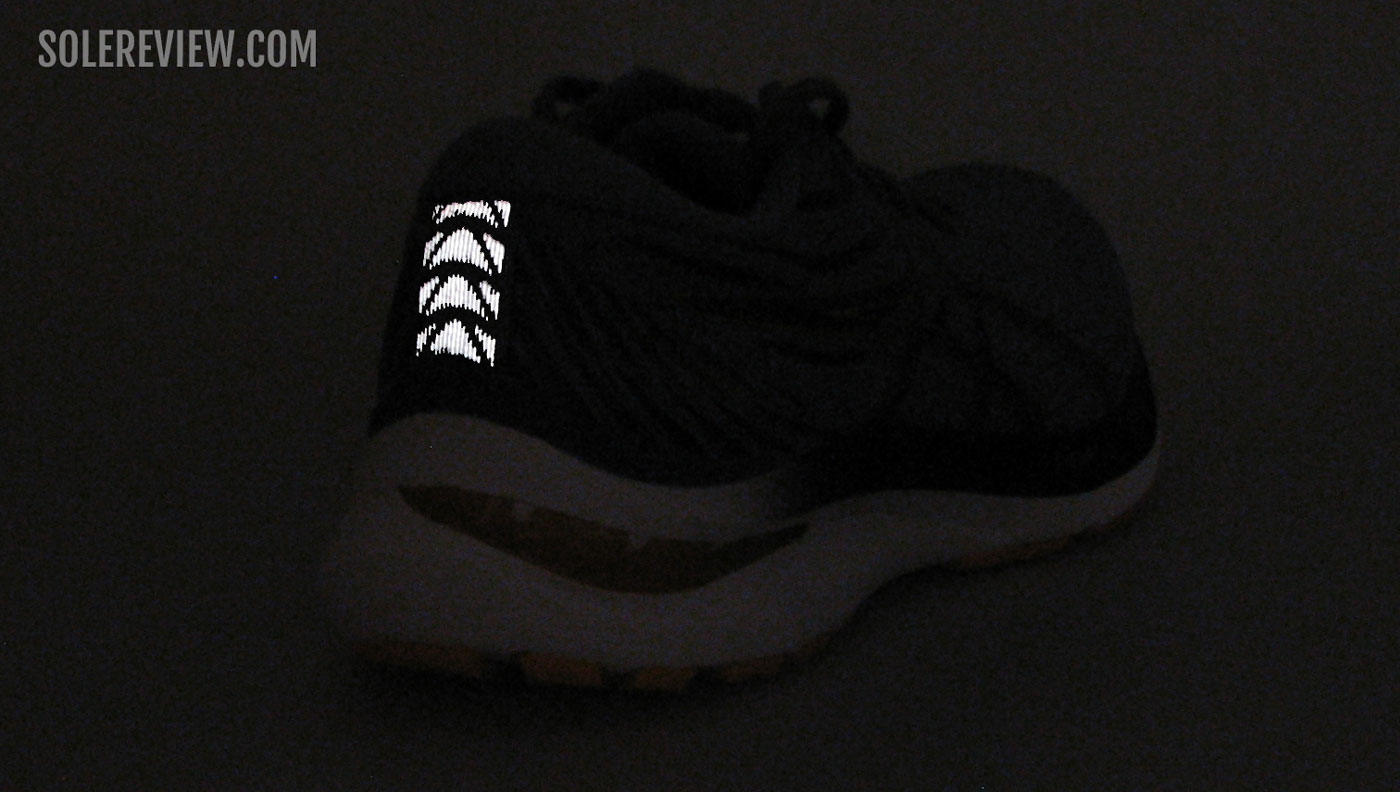
There isn’t a lot of reflectivity on the upper. Only the heel receives the high-visibility treatment.
The Kayano has always had a very supportive heel fit, and that doesn’t change. The stiff internal counter and plastic cup (on the outside) keep the foot locked in without the risk of heel slippage.
Also, the heel is the only area with high-visibility trims.
PROS AND CONS
One of the areas where the Kayano 29 performs better than the previous versions is the level of ride comfort. The softer ride makes long-distance training less punishing on the feet, and the medial post doesn’t feel invasive. It’s just that it’s difficult to dial up speed on the soft Kayano, thus cramping its versatility.
We also have to call out the imperfect midsole design that creates a pressure hot spot under the forefoot. This also means that the Kayano 29 is better suited for rearfoot strikers.
The rest of the shoe is very likeable. The upper is soft, plush, and well-fitting. The outsole grips well. Optional widths are available, ranging from a 2E (wide) to 4E (extra-wide).
COMPARISON: THE ASICS KAYANO 29 VERSUS ASICS GT-2000 V11
The GT-2000 and Kayano are two of Asics’s most popular (and commercially successful) stability shoes with a medial post.
They’re alike in some ways, and different in other aspects.
For example, the $20 cheaper GT-2000 has an 8 mm heel offset – which is 2 mm lower than the Kayano 29. The GT-2000 11 is also 10% lighter, and not as soft. The upper also plays a role in the weight savings, as it lacks the heel clip, plush linings, and the thick mesh of the Kayano.
As a result, the GT-2000 has a lower level of ride comfort, but is a more versatile everyday trainer. The lighter and firmer ride makes the GT-2000 11 better at managing higher running speeds. Of course, this is all relative – the GT-2000 isn’t exactly a speed trainer.
SHOES SIMILAR TO THE ASICS KAYANO 29
If the Kayano 29’s medial post – or the size of it – isn’t a good fit for your running shoe needs, the Asics Kayano Lite 3 is worth trying. Its wide midsole offers a cushioned and supportive ride, but without the firmer wedge of foam.
On the other hand, the Asics GT-2000 11 has a smaller medial post while offering higher versatility due to its lighter and firmer ride. The New Balance 860V13 is a firmer alternative to the GT-2000 11.
Believe it or not, there are stability shoes with larger medial posts – the New Balance Vongo V5 is one such product.
The very visible wedge of foam behaves exactly how it’s supposed to. It makes the medial midsole much firmer than the outer side, not very different than how the New Balance 1260 used to feel under the foot.
Do you own this shoe? Improve this review by sharing your insights – submit a review here.

